


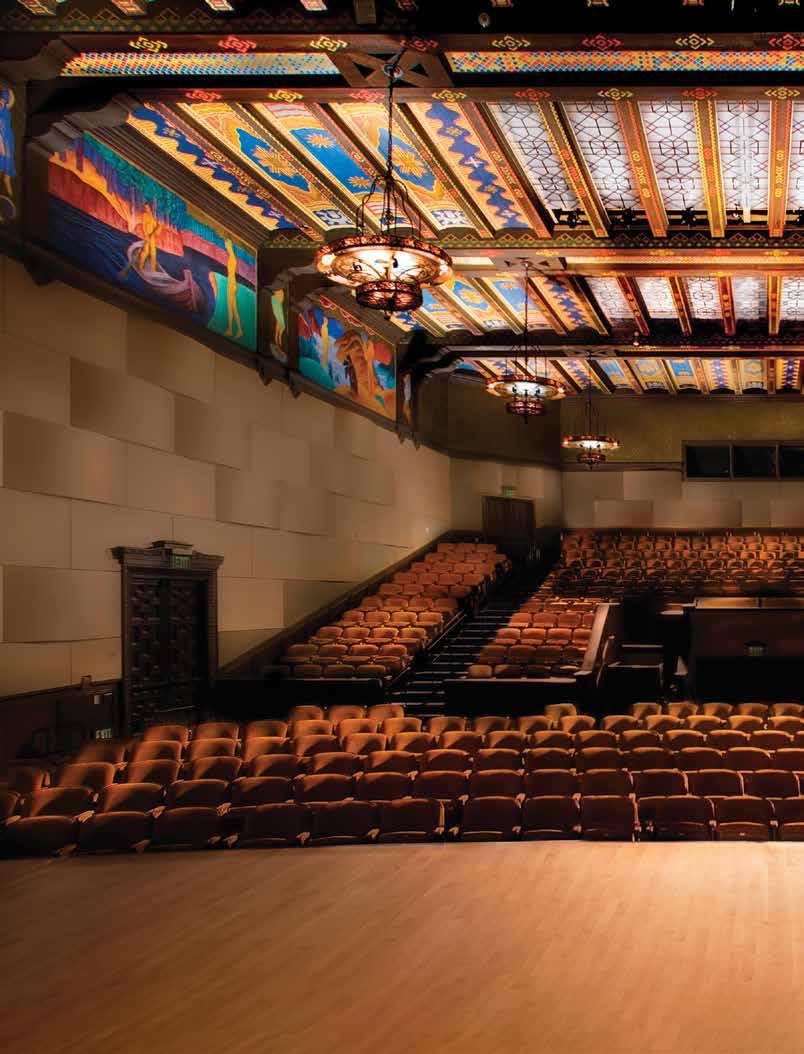





Commencement 2025


18 Production Value by Amanda Loudin
LETTERS TO THE EDITOR / 2
OPENING MESSAGE / 3 ON THE OVAL / 4 OVER THE WIRES / 8
A SLICE OF QUARTERLY HISTORY / 11
August 1961
AAMC NEWS & NOTES / 28 FROM THE ARCHIVES / 33 Lakeside Pageants
CLASS NOTES / 32
ALUM PROFILE / 35 Samantha Lake ’17
MEDIA LAB / 36
CAMPUS PHOTO: There’s no way to confine the grandeur of Littlefield Concert Hall to one page. Photo by Paul Kuroda.
ON THE COVER: Sage de Lafontaine ’25, a legacy Mills student, takes in the sights and sounds of Commencement 2025. Turn to page 10 for more. Photo by Ruby Wallau for Northeastern University.
THROWBACK / 37 The Tea Shop
MEMORIES / 38
Bent Twigs: Donna Shainholts Davis ’50 and Kathleen Davis ’87 IN MEMORIAM / 41
SALON / 48 “Abstract” by Elizabeth Ginno Winkler ’30
Just a note to clarify the history of the I. W. Hellman Pool (in spring’s From the Archives): It remained an active aquatics center where Mills students, faculty, staff, and alumnae swam until the opening of the Trefethen Aquatics Center in 1998, a gift funded largely by Vera Long ’35, who was at that time an active Mills board member. Vera asked that the new center, which has a pool large enough to enable Mills to field competitive swim teams, be named in honor of Eugene Trefethen, a Mills spouse and parent who was also a longtime board member. The Suzanne Adams Plaza funded by Suzanne Adams ’48, chair of the Mills Board of Trustees in 2000-01, replaced the I. W. Hellman Pool in the early 2000s. Suzanne hoped the plaza would become, as it has, a gathering place for the whole Mills community adjacent to the Rothwell Student Union, designed by renowned architect, Julia Morgan.
–President Emerita Janet Holmgren, Oakland
It’s always a pleasure to read Mills Quarterly in its new format.
After participating in the article “Three Paths, One (Deliciously Sustainable) Destination” in the fall 2024 issue, I wanted to fill you in with an update on the chocolate world. The article has proven to be prescient; climate change is really doing a number on the industry. I’ve been sending out newsletters with more info, and I did an interview with a Telemundo meteorologist as part of his in-depth report on how climate change affects Latino-owned businesses.
I hope you can help spread the word about how precious and precarious chocolate is becoming.
–Malena Lopez-Maggi ’13, MFA ’15, co-founder of The Xocolate Bar, Richmond
This year’s Reunion , hosted by the Mills College Office of Alumnae Relations, will be a true celebration of the arts, honoring the creativity, innovation, and legacy that have shaped generations!
Not only is it the Art Museum’s centennial this year, which we’ll celebrate with a lecture and a “Night at the Museum,” but there’ll be a discussion about and demonstrations of the Katherine Dunham dance technique that characterized the Mills Dance Department for many years—with special dedication to the alum dancers who still teach it. As usual, Reunion will include the Darius Milhaud Concert and a Writers’ Salon, but we’ll also get to enjoy a reflection on the 50th anniversary of Maya Angelou’s Commencement address to my class, the Golden Alumnae of 1975.
Plus, a new tradition returns: French Wine History & Tasting with Professor Emeritus Bert Gordon.
Make your plans now; this is a Reunion not to be missed!
–Nan Roche ’75, College Park, Maryland
Corrections
We used the wrong last name for the husband of Gail Myers ’70, TCRED ’72, in the spring Class Notes. His name is Ray Enriquez. We apologize for the error and any confusion it may have caused!
He also wanted to mention that the book Myers published in 2021, What the Children Taught Me: Memoirs of An Early Education Teacher, “places Mills College in high regard.”
ASSOCIATE VICE PRESIDENT
Nikole Hilgeman Adams
MANAGING EDITOR
Allison Rost
DESIGN AND ART DIRECTION
Nancy Siller Wilson
CONTRIBUTORS
Hannah Davis
Amanda Loudin
Moya Stone, MFA ’03
Kieran Turan ’90
Ruby Wallau
Debi Wood ’75
The Mills Quarterly (USPS 349-900) is published quarterly by Mills College at Northeastern University, 5000 MacArthur Blvd., Oakland, CA 94613. Periodicals postage paid at Oakland, California, and at additional mailing office(s).
Postmaster: Send address changes to: Oakland University Advancement, 5000 MacArthur Blvd., Oakland, CA 94613.
Copyright ©2025, Mills College at Northeastern University
Address correspondence to: Mills Quarterly 5000 MacArthur Blvd. Oakland, CA 94613
Email: mills.quarterly@northeastern.edu
Phone: 510.430.3312
Submit your letter to the editor via email to mills.quarterly@ northeastern.edu, online at quarterly.mills.edu, or by mail at: Mills Quarterly, 5000 MacArthur Blvd., Oakland, CA 94613. The Quarterly reserves the right to edit letters for length and clarity.
In 2019, following the major renovation of Lisser Hall, all the theaters at Mills College became one multi-venue performing arts center known as Mills Performing Arts. (In addition to the two venues in Lisser, those theaters include Littlefield Concert Hall and the Greek Theater in the Music Building, and the Rothwell Theater in the former bookstore space.) This new entity was created not only to offer the College support in the production of events, but also from a desire to actively engage alumnae and the local community in the extraordinary tradition of innovation and creativity in the performing arts.
Since day one, Mills Performing Arts has had the pleasure of supporting a wide array of events, concerts, conferences, and academic showcases from departments across the College; hosting acclaimed artists from all around the world; and even sharing livestreamed performances and conversations during the pandemic, when our opportunities to assemble in person were limited.
And we are still here now, within Northeastern University and the Oakland campus, where our mission to promote action and exchange in the performing arts continues. We remain committed to creating space for artists to practice, imagine, and perform, and for audiences to experience innovative new work and to reflect on the creative legacy developed here at Mills since the early 20th century. I’m pleased to share more about what we’re currently doing.
Upcoming highlights include a September 7 concert co-presented with Other Minds that celebrates the music of former Mills faculty members Robert Ashley and “Blue” Gene Tyranny; the annual Darius Milhaud Concert on September 19, featuring Schola Cantorum SF directed by Paul Flight; and multiple screenings of the 23rd Oakland International Film Festival from September 12 to 20.
In addition to this live programming, we are also hard at work preserving and engaging Mills history through the Mills College Legacy Collections archive project. This effort brings together multiple departments that hold collections of materials (both physical and digital) that were created over the decades at Mills, including its Center for Contemporary Music (CCM), dance, theater, creative writing, and fine arts. These materials are being inventoried, documented, and digitized—and thanks to the AAMC’s fundraising efforts, preservation of CCM materials is the most advanced of these initiatives, with more than half of 1,539 audio tapes already digitized. The collections will be transferred to the Northeastern Library and Digital Repository as a permanent home for these cultural treasures.

Our archive illuminates something profound about the Mills approach to creativity: a willingness to embrace technological change while maintaining a deep commitment to human expression and artistic integrity. As society navigates the rapid adoption of new technologies and the possibilities and challenges of artificial intelligence, the preservation of and continued engagement with our performing arts heritage provides essential perspective and inspiration.
Together, we continue this journey of celebrating and nurturing the creative spirit that always defined Mills.

As calculated by Director of Academic Affairs Bryan Aja, nearly 175 years of combined service were honored at a reception on April 29 for legacy Mills faculty members retiring from Mills College at Northeastern University. Four of the five departing professors joined with colleagues and well-wishers in the Mills Hall living room for refreshments and tributes.
“Let us not recognize just the conclusion of careers with Mills, but the beginning of legacies that will continue to inspire for generations to come,” Aja said.
First was Assistant Teaching Professor of Dance Sheldon Smith, who started at Mills in 2008. Juliana Spahr, English professor and chair of the arts and humanities unit under Mills at Northeastern, lauded his many years as department chair and on various Mills committees. She also thanked him for keeping the Mills dance legacy alive through digitizing and archiving thousands of hours of video and through his work on the community collab DanceHack in recent years.
“I’ve come to rely on him a great deal, and his students know him as someone who helps them understand dance as a way they can learn about and express their identity, their culture, and their communities,” Spahr said.
Taking the mic himself, Smith mentioned that his tenure at Mills and his son are the same age—17 years— and as a result, retiring is a profoundly

strange experience. “I’ve found myself reflecting on how many times I’ve walked into my classroom underprepared or maybe not prepared at all, and that’s suited my love of improvisation,” he said. “I had no idea what to expect coming into this, but now that I’m here, [I have] the feeling of gratitude, of memories, of embracing history, standing on this ground where people have danced.”
He did promise that he is not retiring from his artistic practice.
Ajuan Mance held a number of titles over the 25 years she spent at Mills— most recently as a professor of English and ethnic studies, and the dean of digital learning and curricular innovation. “She was at Mills when I arrived and it’s heartbreaking to me that she will not be at Mills after I leave,” Spahr said. “Students took her classes over and over as if she were a rock star and they were her groupies.”
Mance’s classes ranged from Civic Leadership and the Social Text to World Roots of Literature, along with a variety of courses on Black literature, which also fit her research interests. But over her time at Mills, her artistic practice blossomed and intersected with her academic pursuits, leading to the publication of titles such as

1001 Black Men and a new position as professor of illustration at California College of the Arts.
“She was always a visual artist. She was always sketching at faculty meetings, and now she’s focused her career there,” Spahr said. “That’s flowered in really beautiful ways.”
“I had 25 great years here. Mills really helped me become the literary historian that I still feel I am today and nurtured me through turning my dissertation into a book,” Mance said. “For me to channel my passion for studying identity and creativity and representation into being an artist… I will forever be grateful for the very special place I had at Mills College.”
Forty-six of the nearly 175 collective years mentioned at left come from Professor of Studio Art Catherine
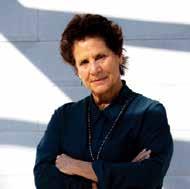
Wagner, and over that time, she’s won numerous awards for her photography and shaped the visual arts at Mills. But in noting her influence, Spahr quoted a letter that Wagner once received from a former student, a science major who is now a physician:
“Your classes were some of the most difficult as there was never a correct answer to the assignments, but I learned so much about problemsolving and creative thinking,” the author wrote. “If anyone needs an argument for the importance of art in this time of STEM, it’s right there.”
When she delivered her remarks, Wagner admitted her surprise at the actual number behind her longevity. “Mills was a place where I literally
grew up,” she said. “It allowed me to cast a much wider net in terms of my thinking about what I do. Although I was in charge of photography, my work has spread far beyond.”
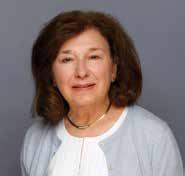
Joining the proceedings virtually, Professor of History Marianne Sheldon was celebrated for many accomplishments over her 50 years at Mills—serving as dean of the Division of Social Sciences, directing graduate studies, taking the position of associate provost. But Spahr gave her a shout-out for a most unexpected achievement: keeping up with accreditation paperwork.
“For years, she kept Mills accredited through her attention to WASC (Western Association of Schools and Colleges) paperwork, which is a thankless job in many ways,” Spahr said. “She’s a quiet, steady colleague, and she’s known for being a great teacher. Or, as a recent student wrote, ‘I have never felt more cared for by a professor.’”
“I feel like I’ve been at Mills long enough to be a part of its history,” Sheldon said. “I’ve enjoyed every generation of students, and I’ve been honored to be able to teach. I’ve appreciated every moment.”
Absent from the proceedings was Carlota Caulfield, now professor emerita of Spanish, though she was still recognized. Check “Spanishlanguage stalwart retires” from the spring 2024 issue of the Quarterly to read more about her tenure at Mills.
On May 20, Barbara Lee ’73 took the oath of office to become Oakland’s first Black woman mayor.
The April 15 special election to replace the recalled former Mayor Sheng Thao took several days to call. Initial results had Lee’s main opponent, former District 6 councilmember Loren Taylor, in the lead.
But Oakland utilizes rankedchoice voting for city elections, and after processing additional ballots, the Alameda County Registrar of Voters reported and certified that Lee had captured 50.06% of the vote to Taylor’s 44.98%.
Lee declared victory four days after the election, on April 19.
In a statement posted online after her swearing-in, Lee referenced her undergraduate years:
“Today, I was sworn in as the Mayor of Oakland— the city that gave me hope, an education at Mills College, a safe place to raise my family, and the chance to serve in public office. I am deeply honored and humbled to serve the city I love most.”
Summer Academic Workshop (SAW), the beloved Mills College program that supported firstgeneration students, was relaunched under the Mills Institute this past year—with a new name, but the same heart and soul. The program, now called Trailblazers, supported 22 firstgen and low-income students during the 2024-25 academic year. It ended on April 9 with an end-of-year celebration at Reinhardt Alumnae House attended by students, staff, faculty, and alum mentors.
Participants shared how the program impacted them with brief spoken remarks. Those students included:
Chanelle Boadu, who enrolled on the Oakland campus in fall 2024 and intends to major in biology. “Looking back, it feels less like something I completed and more like something
I’ll always carry with me,” she said. “I didn’t just walk away with a full belly—I left each day with new insights and lessons that I know will help me thrive in college and grow into an even better version of myself.”
Hilary Garcia, who’s studying psychology and business administration. Her Trailblazers mentor for her first year was SAW alum Lilian Gonzalez ’09, now assistant vice chancellor for student life on the Oakland campus, about whom Garcia spoke glowingly. “Knowing I can have someone support me through this new life ahead of me is honestly just a weight off my shoulders,” she said. “I am genuinely indebted to this program, honestly.”
Ricky He, a computer science student and Pennsylvania native who spoke about how his parents never
The growing emphasis on the many different varieties of sustainability in the curriculum of Mills College at Northeastern was seen in the strong lineup of activities for Sustainability Innovation Week, held March 10–14.
The theme week is a new Northeastern-wide event, and the Dean’s Office put special effort into how it unfolded in Oakland.
Two big events served as anchors; on Monday, local organizer Cielo Flores spoke about their work with various groups and the training they received on land stewardship in a presentation on Cultural Sustainability & BIPOC Community Activism; and on Friday, Assistant Teaching Professor Natalee Kēhaulani Bauer ’97, MA ’07, and UC Riverside Professor Sarah Whitt joined forces and discussed their recent publications for Histories of Indigenous Education: Authors in Conversation.
finished high school. “I flew all the way across the country [...] so it was a lot for me to adjust to,” he said. But he added that his mentor, Alec Stubbs, assistant teaching professor and Politics, Philosophy, and Economics (PPE) program coordinator, truly made a difference. “If he hadn’t shown up, I don’t know what I’d be doing right now,” he said. “He helped me find myself, my identity, what I want to do in life, what truly matters to me.”
All of this year’s Trailblazers Scholars are moving on to Boston but will continue engaging in programming specific to first-gen students, and many of them have agreed to be peer mentors to next year’s cohort. The Mills Institute will invite a new group of first-year participants to become Trailblazers on the Oakland campus this fall. –Lynn Santopietro

In between, there was a webinar on Empowering Young Learners: A Disability Studies Approach to Early Childhood in the evening of March 11; and faculty from throughout the Oakland campus came together for an Interdisciplinary Sustainability Panel in Adams Plaza on March 12 at lunch.
The week concluded with the annual Spring Farm Fest (pictured), which was open to residents of nearby neighborhoods. It was preceded this year with the inaugural Pinetop Palooza, a beautification event for students to help restore the well-trod trail.
For the first time since the Northeastern merger was finalized in 2022, summer classes are taking place on campus, with course offerings including advanced options in biology and computer science. The students enrolled in these courses come from across the Northeastern network.
They have been joined by rising highschool juniors and seniors taking one of three immersive pre-collegiate summer sessions: Building Healthier
This spring, Ashley Adams was sitting in a meeting at F. W. Olin Library, but her mind was elsewhere. She couldn’t wait until she and Rebecca Leung, the manuscripts and archives librarian, could find a moment to get into the collection of Susan Mills’ old letters.
Why? She was looking for one penned by Booker T. Washington.
In the 2024-25 academic year, Adams—who is an associate teaching professor in public policy—undertook the Mills History Project with the help of students in her research class. The impetus for Adams to start this work was her discovery that Martin Luther King Jr. and Coretta Scott King visited Mills in 1958, an event that isn’t wellknown in the College canon.
Little did she know what she would find. In reviewing a massive index of archived objects in the Mills collection, she happened to catch the name of the renowned Black author and educator who had been born into slavery but later led the Tuskegee Institute for more than 30 years.
That day in the Heller Rare Book Room, Adams went searching for a letter he’d written to Susan Mills on the occasion of her 80th birthday. She found it, among many well wishes from higher ed leaders from across the county, as well as evidence that Washington actually spoke on the Mills campus in 1903.
“It was like somebody had called on
the phone back in the early 1900s, and I’d just picked it up. I felt like a time traveler,” Adams says. “It was just very profound and shocking.”
That evidence led to a contemporaneous written report in The White & Gold by a student with the initials HBE. Adams and Leung were then able to identify that author as Hettie Belle Ege, the future Mills president who graduated from the College that same year.
Ege wrote that Washington opened the spring 1903 term with a lecture after receiving an invitation from the College’s Bryant Literary Society.
At that time, he was delivering speeches to various audiences across California, and she quoted him saying the following at Mills: “Race hatred is no solution for any problem on earth… [and]… Freedom in the highest sense is a conquest.”
It likely goes without saying that Adams added Washington’s visit to Mills to the working timeline she and her students have created. That timeline of 21 events vital to Mills history, which she and various campus partners (including Quarterly editor Allison Rost) are finessing this summer, will eventually become part of Northeastern’s library resources and a living document of the College’s legacy.
Adams will speak about the Mills History Project during a Thursday session at this fall’s Reunion.
Associate Professor of Religious Studies and Women’s Gender, and Sexuality Studies Judith Bishop and Associate Professor of Sociology Mario Hernandez, both legacy Mills professors, have been named Humanities Center Global Fellows for the 2025-26 academic year. The Humanities Center is part of Northeastern’s College of Social Sciences and Humanities, and the theme for this incoming cohort of scholars is Unsettling. Bishop will investigate early deaf education, and Hernandez will look into community land trusts.
This spring, the Oakland campus hosted a seminar for local small business owners to learn more about AI from Northeastern computer science students. Hosted at the Lorry I. Lokey School of Business and Public Policy, the workshop attracted the owners of enterprises such as Phlex65, a home healthcare service, and Town Love Box, which curates gift boxes of Oakland-made products. Participating students were also coached on using active listening techniques during their face-to-face work with the visiting entrepreneurs.
Communities Through the Arts, Experiential Entrepreneurship, and Game Design in Extended Reality. Tuition for these programs includes room and board in campus residence halls and off-campus excursions in the local community.
Other student-facing activities taking place this summer include Upward Bound, the Summer Youth Employment Program, and the Jill Barrett Research Program in Biology.
And per usual, various construction projects are taking place across campus during these slower months, including additional sewer and water main renovations, the building of a new trash enclosure behind the Tea Shop, and roof replacements at Orchard Meadow and Warren Olney. If you plan to visit campus before the fall semester begins, be aware that certain parking lots and roads may be closed.
July 31 is the deadline to apply to be a California Climate Action Corps fellow working on the Oakland campus. Three applicants will be selected for an 11-month period starting in September and spend more than 1,700 hours working hands-on in our unique environment and greenery alongside Head of Sustainability Andrew Gonzales and his team. They will also earn up to $45,000 in stipends and tuition support. Visit caclimateactioncorps.org/positions for more information and to apply.
6 6 6 6 6 6 6 6 6 6 6 6 6 6 6 6 6
Renel Brooks-Moon ’80, who controversially left her role as the public-address announcer for the San Francisco Giants last year, is back as a voice in MLB The Show 25, the league’s only officially licensed video game.
For Women’s History Month, KRON-4 in San Francisco aired an interview with Mills Institute Executive Director Christie Chung about her journey to higher education. Watch the piece at tinyurl.com/christie-chung.
Julia Christensen, MFA ’03, the Eva and John Young-Hunter Professor of Integrated Media at Oberlin College, was lauded by Oberlin for her work on The Tree of Life project. Read the piece on her translation of data from flora and fauna around the world into visual and auditory frequencies at tinyurl.com/julia-christensen.
Professor Emeritus of History
Bert Gordon has joined the board of directors for the Institute for Historical Study, a Bay Area-based organization of active and retired scholars.
An assistant professor of electrical and computer science on the Oakland campus, Aravind Nagulu has received a $500,000 award from the National Science Foundation to fund his work in the Institute for NanoSystems Innovation on scaling quantum computers.
In the issue of The New York Times Magazine that came out on February 16, Andrew Herring, Pre-Med ’04, spoke about his work at Highland Hospital with alternative practices for treating opioid addicts. Read the article at tinyurl.com/andrew-herring.
On February 20, Assistant Teaching Professor Susan Ito, MFA ’94, participated in the discussion “Refusing Silence: Writing Women’s Lives” at Womb House Books in Oakland. She appeared alongside two other authors who have also published books about their heritage.
Darcelle Lahr, MA ’17, EdD ’18, who is also the John and Martha Davidson Endowed Professor of Business Practice, has received special recognition from the Maryland Truth and Reconciliation Committee for the testimony she provided to the group’s hearings on restorative and transformative justice.
The Montalvo Arts Center has awarded Nathan Lynch, MFA ’99, the 2025 Marcus Commissioning Prize from the Sally and Don Lucas Artists Program. He’s created the public sculpture work “A Place for Meeting Strangers” on Montalvo’s Saratoga grounds, which is available for viewing (and participation) through November 9.
For Women’s History Month, NBC Bay Area interviewed Susan Lynch ’72 as one of the first women train operators for BART (Bay Area Rapid Transit). Watch her segment at tinyurl.com/susan-lynch.
In the lead-up to the April 25 release of The Accountant 2, Daniella Pineda ’09 —who plays Anaïs in the film—made the publicity rounds, including on The Kelly Clarkson Show One review on The Movie Blog called Anaïs the movie’s “heartbeat”; read it at tinyurl.com/daniella-pineda-25.
Lena Pisetskaia Herzog ’96 is an artist and photographer, and in March, she spoke about her work in the profile 60 Minutes aired of her husband, the legendary film director Werner Herzog. Watch the segment at tinyurl.com/lena-herzog.
The Whiting Foundation has awarded Elwin Cotman, MFA ’12 , one of 10 2025 Whiting Awards for up-andcoming writers. Previous winners have included Colson Whitehead and Cristina García, and the award comes with a $50,000 prize.

Corinne Sklar ’04 made an appearance on the newly launched Rules to Thrive podcast. Her episode, which aired on April 28, discussed her work as a vice president and managing director for Salesforce at IBM.
The business publication Mirror Review profiled Rita Stuckey, MA ’01, EdD ’05, who founded the Care Advocates Program to stem the tide of elder abuse throughout the U.S. Read the article at tinyurl.com/rita-stuckey.
Professor Emerita of Studio Art Catherine Wagner welcomed Apollo magazine into her studio for a Q&A that was published on February 27. Read the piece at tinyurl.com/catherine-wagner.
While Mills students are basking in the sun , touring foreign lands, or facing the newness of a summer job, the campus is quiet, even forlorn. But if you stand on the post office steps on a summer morning between 9 and 10, a good portion of the faculty will pass by and quickly shatter any illusions you may have about idyllic three-month vacations for those engaged in academic pursuits.
Allan Wendt is spending the summer working on his current book. He has set a schedule of 10 pages of revision per day on his novel about contemporary academic life (not an expose of Mills, he assured me), and the “temporary” English Building is his summer headquarters. He hopes to complete the novel prior to beginning his sixth year on campus this fall.
–Conni Stone Goldeen ’50
The acknowledged social center of the Mills summer community is the I. W. Hellman Pool, open every afternoon (except Monday). The afternoon can be divided roughly into two. Busy adults, whose stomachs do not call out for lunch promptly at noon, meet in a select and sober group to enjoy the relative emptiness of the pool. Then is the Rothwell family’s time, as a busy president can sometimes sneak minutes out of his lunch hour to relax. But act two soon commences and the pool rapidly becomes noisier and more animated as it fills with swimmers and with rubber ducks, air mattresses, and other inflated impedimenta.
Alumnae from San Francisco—who have phoned ahead to see if Oakland really is free of the fog that surrounds them— arrive with their families. One of them brings not only four moppets of pre-swimming age, but also a large wicker hamper that frequently serves as a “house” when the water palls.
The main trouble with being an adult at this time is that so many of the children, including some minute ones, swim so well that we are put to shame. My own private conviction in regard at least to one small boy (tentatively identified as Miles Powell, 8, son of Joyce Kelly Powell) is that he is really a frog who has been magicked by a wicked enchanter into a small prince, and the sooner a frog princess can be forced into breaking the spell, the better for my self-esteem.
–Roussel Sargent
The general maintenance of the buildings and grounds , the bailiwick of Plant Manager Eugene Phillips, is a continuous job, but there are certain projects that must be accomplished during the summer. Plumbing repair in the halls is a project for this summer; so are new locks in Alderwood, towel bars and medicine chests in Mary Morse, wash basins

in Mills, road paving and parking lot construction, an underground cable for street lighting from Lisser to Ethel Moore. A new section is being put on the west side of the Mills Hall roof. Meanwhile, to start curbing the noise, rubber tile is being laid in the dining room. Mills, being our favorite antique, gets special handling: new ceiling fixtures, modernization of bathrooms, and perforce, attention to the steam pipes.
Next time you fret about spring cleaning and summer improvements, remember Mr. Phillips and his worksheet of hundreds of items, big and small, all requiring attention before school opens.
–Harriet MacConaughey Mitchell ’35
Despite the quiet streets and closed doors, there is a hum of general activity in every field. Summer at Mills is a time to carry out the plans made during the rest of the year; it is battery-recharging time for faculty and administration. It is also the best time to enjoy the “informal beauty” that the catalog describes, but which one rarely has time to appreciate during the “magical madness” of the academic months.


On a damp Sunday morning in late April, something that was inevitable since the merger of Mills and Northeastern took place: legacy Mills students and master’s candidates who enrolled at Northeastern both crossed the stage on Holmgren Meadow to celebrate completing their degrees.
The Commencement ceremony, which kicked off at 11 a.m. on April 27, incorporated many traditional elements from past graduations: the tolling of El Campanil before the start of the procession, the release of environmentally conscious confetti, and a mariachi band performing at the close. A recording of the Mills hymn “Fires of Wisdom” was heard over the loudspeakers as several dozen alums filed into the crowd, wearing regalia and carrying their class banners. In all, 23 seniors who had initially enrolled at Mills graduated with their Northeastern degrees, along with 33 recipients of master’s degrees mostly in the fields of computer science and informational systems and five newly minted doctors of education.
Diane Gonzalez, the vice president of technology and finance automation at Amazon and herself a first-gen college graduate, delivered the keynote address. “My whole life, I’ve been told: You can’t, you shouldn’t, and you won’t. When people tell you that, don’t listen to them,” she said. “More often than not, I’ve found that they’re projecting their own insecurities or lack of ambition.”
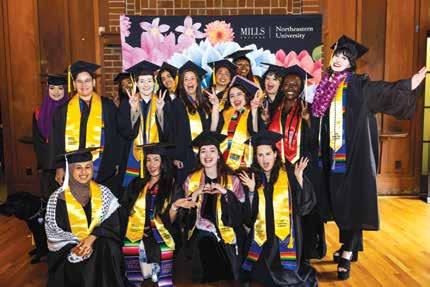

Student speakers this year were Diya Wadhwani, who earned her master’s in computer science (as well as a commendation from Northeastern’s Laurel & Scroll 100 society) and spoke on behalf of the graduate students; and Teddy Johnstone, who completed their undergraduate years with a bachelor’s degree in English, dabbled in book art, and worked at F. W. Olin Library. Read Johnstone’s speech in its entirety starting below.
When it came time for the graduating students to walk, faculty representatives from the five Northeastern colleges present—the College of Arts, Media, and Design; the College of Engineering; the College of Professional Studies; the College of
Social Sciences and Humanities; and Khoury College of Computer Sciences—stood and addressed the dignitaries present, including Campus Dean Dan Sachs and Vice Provost Waleed Meleis. And then, it was pure joy as each degree candidate crossed the stage to raucous applause, some even raising their arms in victory.
After the ceremony, new alums from all corners of campus—both Mills legacy and Northeastern graduates alike—gathered with their families at Reinhardt Alumnae House for a barbecue lunch alongside the Mills grads who walked with them.

Good morning, and thank you for joining us for graduation day on this gorgeous campus. This day felt like a lifetime away when I first arrived here, and I think I was right. These last four years have certainly contained enough joy, stress, personal growth, and procrastinated assignments to last a lifetime. No part of my life has been unaffected by my time on this campus, and finding ways to remake and live after the merger has taught me, if nothing else, how resilience really works. But today is about us.
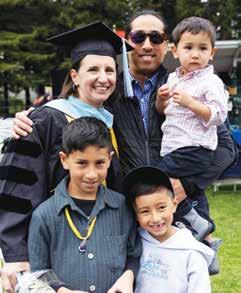
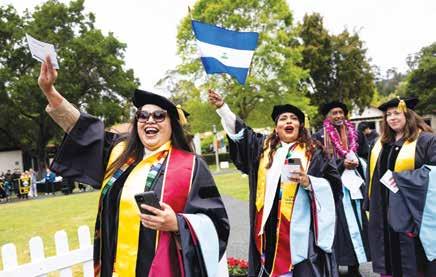
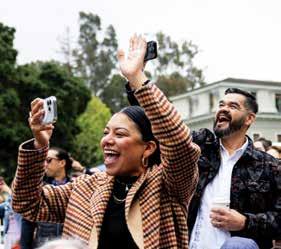
I didn’t have many friends in high school. I would dream of college, and how everything would change once I got there. On my first day here, I started to worry that I might have been wrong. Everyone already seemed to be in groups, and I didn’t dare cut in. My parents left, but not before my mom made me promise to go talk to some new people. Once they were out of sight, I very nearly broke that promise. I resigned myself to going back to my dorm room, alone.
Heading to Warren Olney, I saw something beautiful: a bleach blond buzzed head, with a green and blue dinosaur drawn on the back in hair dye. I caught their attention, said I loved the hair, and just about continued on my way. But the person’s friend caught my arm. “I’m Lillith,” she said, eyes open, bright, and excited to meet someone new. I nearly cried from relief. I was quickly whisked away to meet the whole friend group, and suddenly, everything felt easy. And for the first time ever, I said aloud, “Hi, I’m Teddy.”
continued on page 14



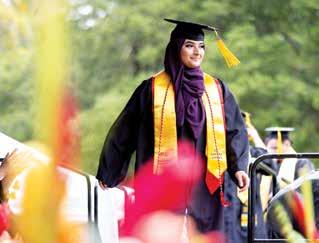
Undergraduate Commencement speech, continued
The kindness and connection this place has brought me have been life-giving. I have met the most giving, creative, funny, beautiful people in the world on this campus, and they return my love tenfold. That is what Mills has given to me, more than anything else: connection. We carved out a space for ourselves in one another, a space to rest, to laugh, to be held and valued. I was right, in high school: My world has been transformed, and myself right along with it. And I cannot thank you all enough for that friendship.
To my professors, I extend my sincerest gratitude. Your dedication to deeper understanding, poignant conversations, and creative expression has shown me the enormous value of my own mind and those around me. To direct your mind toward something as entirely as you can, to make your own understandings alongside those that already exist, to pry something apart and make yourself wonder—that is where you find value. It’s not about memorization; it’s teaching yourself how to truly think, for the sake of yourself and the world.


“We carved out a space for ourselves in one another, a space to rest, to laugh, to be held and valued.”
– Teddy Johnstone ’25
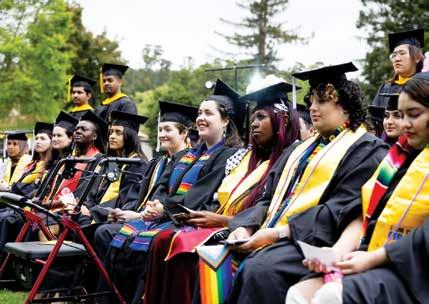
The idea that words have enormous power for change has been a building block of my identity for as long as I can recall and led me to be an English major. I believe that language and storytelling paired closely with compassion is the best way to weave strong bonds among people and the world at large. Thank you, from the bottom of my heart, for instilling this in me.
To the staff, from the library to Founders: This campus would not run if not for our janitors, facility workers, cooks, clerks, and librarians. The work they do is often invisible, but we must all learn to look, notice, and thank people personally. (Special shout-out to Kevin!)
To my fellow graduates: We are and can be a group of young, powerful, empathetic people who build strong, loving communities. We know intimately what it is to be targeted, by governments, by institutions, by neighbors. And so, we know intimately how to teach one another to heal and fight back. Never doubt your wisdom or its necessity. The world needs your mind and your heart desperately; you cannot let them be distant. Reach for knowledge, reach for art, reach for rest, and reach—most importantly—for one another. I love you all.
Thank you.
Lyssa King first enrolled at Mills College in fall 1994, and in 2025, she finally crossed the stage to receive her degree.

The years in between were a mixture of highs and lows, but combined with her newly minted degree in psychology, they’re pointing her in one direction: becoming a therapist.
A difficult childhood and a first attempt to quit narcotics at 17 followed her to Mills, the one college she applied to after taking several years off after high school. King dropped out her sophomore year when she fell off the wagon, always intending to return. “I’ve always been very open about my struggles with addiction, chronic illness, and mental illness, for a few reasons,” she says. “I want to help dispel stereotypes—addicts are not bad people who are beyond help. We are ordinary people who suffer greatly. Nobody chooses to be an addict.”
She says that she finally turned things around in January 2013, checking into rehab for the sake of her children—daughters Alena and Rosalie, who were on hand to cheer on their mom, alongside lots of family and friends. When King decided to go back to school, she only wanted to continue her education at Mills: “I loved it here, and it was such a special time for me.”
The Northeastern merger did make her path to graduation a little longer than expected; she ended up with a BS in psychology rather than the BA she was studying for at Mills. But it was something she was determined to do; her many fans at Commencement included the therapist she had worked with to move past her childhood trauma. “I called her and told her how much she meant to me. It was very emotional for both of us!” King says.
Her next step, eventually, will be grad school to make her goal a reality.

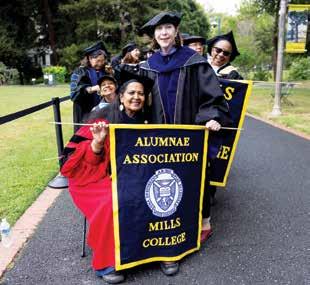

Rohan Hughes, MCS ’25, with his best friend, Gregory Rossman, MA ’17
Kate Carlin, EdD ’25, with her mother, Tricia Kerr ’87 (left), and mother-in-law, Sharyn Floyd ’84

’Tis education forms the common mind: Just as the twig is bent, the tree’s inclined.
–ALEXANDER POPE, 1734
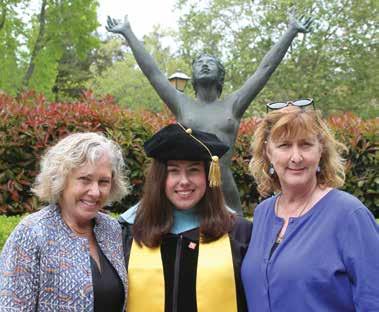

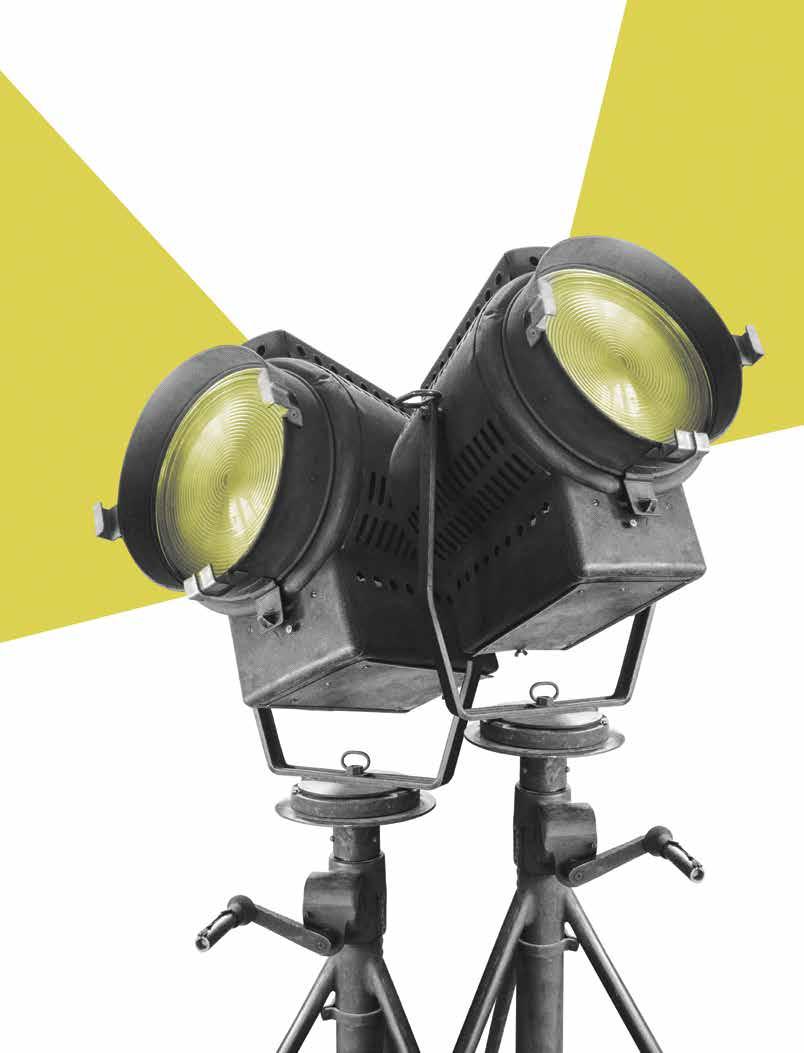
WORDS BY AMANDA LOUDIN / ILLUSTRATIONS BY IGOR LINK


WHEN ENTERTAINMENT AWARD SHOWS ROLL AROUND each winter, most fans focus on the acting categories, and why wouldn’t they? They represent the most obvious pieces of a production, the “in-your-face” part of the equation. We admire their craft and— sometimes—relate with their characters. But every good production is the sum total of many parts, and most of them are seamlessly out of sight as you’re transported to another world. And that’s thanks to the exquisite craftsmanship of the designers, producers, editors, and more.
Some of the nation’s top examples of these professionals trace their paths back to Mills. By acquiring a foundation in the performing arts, history, and other liberal arts, these alums have worked their way up the ladder, honing their craft for the betterment of entertainment. Some live in the theatrical hub of New York City, while others are at work in the Bay Area, Atlanta, and even the Pacific Northwest. They’re award winners, nominees, and leaders in cutting-edge technologies that elevate the entertainment arts to new heights. And despite their career successes, all of them agree: They’ve perfected their crafts not for the accolades, but because they love it.
About 25 years after graduating from Mills with a degree in drama, Rebecca Pugh O’Neil found proof to back up a gut feeling she’d long held: Drama majors are mostly women, but roles for women of any age or ethnicity probably make up only 20 percent of all roles. “I was outraged,” she says.
While outrage can sometimes bring people down, O’Neil channeled hers into something positive. While obtaining her MFA in arts leadership at Seattle University, she created a strategic plan for a theater company that would support and amplify the voices of the underrepresented. In 2019, the result was The Shattered Glass Project, where O’Neil now serves as artistic director.
O’Neil is a natural champion for women and trans and non-binary folks, and she credits her time at Mills for strengthening her convictions and courage to act. “Mills gave me an incredible academic foundation, and also, a space where I didn’t feel silenced by men in the room,” she explains. “This was critical in the ’80s when we were suffering for opportunities to gather as feminists.”
Mills also introduced O’Neil to theater production via a study-abroad program in London: “I liked the drama classes, but my time studying theater in London was a remarkable year.”
After graduation, O’Neil spent 10 years as a starving artist in Portland, Oregon, where she acted, produced, and directed. She then moved into the legal-adjacent community, beginning in administrative support and then moving into membership for a specialty bar association. She took time off to raise her son before moving on to Seattle University School of Law, where she specialized in event management and continuing legal education programming. O’Neil says she believes this prepared her well for her current line of work.
She is also a believer in the idea that most people land jobs in theater through their networks. Her Director & Playwright Incubator/Mentor Program has a vision to “make the theater world more equitable by empowering theater artists who have been marginalized on the basis of their gender, including but not limited to cis and trans women, non-binary folks, and trans-masculine and trans-feminine folks, to move into professional playwright or director roles.”
The program features a 12-month, tuition-free opportunity to develop professional skills and confidence as a theater practitioner. Through monthly cohort peer
meetings, skills-based workshops, and developmental work on new scripts, the incubator culminates with the New Works Festival, a collection of one-act plays. There’s also a main-stage production once a year—this year’s is titled I Will Miss You When You’re Gone. “It was introduced to us by one of the incubator cohort members,” says O’Neil. “This past year we performed a piece written by another incubator alumna and her writing partner, one of our board members.”
Today, O’Neil believes in the Shattered Glass Project’s mission more than ever. “Women’s voices are still massively under-represented on every possible stage,” she points out. “Non-binary and trans voices have even less representation. It’s our job to keep amplifying their voices in the non-profit theater sector so that eventually, we can make noise in the for-profit sector.”
O’Neil cites research that today, only 30 percent of Broadway productions are written by women, and that likely, the trans and non-binary community has no representation on that commercial stage. “The story doesn’t have to be about them, as long as they are present on the stage,” she adds. “If you normalize their existence on stage, it will normalize their presence in our world.”
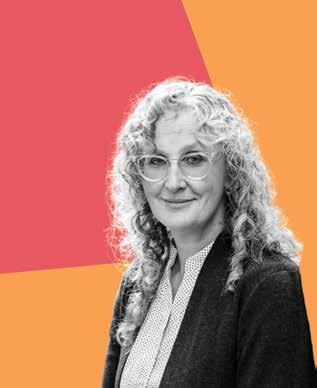
Odds are that if you’ve attended a Broadway show, you’re already familiar with the work of Anna Louizos. Her resume is packed with set design for titles like In the Heights, High Fidelity, Avenue Q , and many others. Along the way, she’s received multiple Tony Award nominations, a nod to her talent. And it all started at Mills, where she spent two years studying theater and performing arts before moving on to NYU.

“I took my first design class at Mills, allowing me to draw, build the sets, and run the design shop at the school theater,” Louizos explains. “My professor, James Wright, encouraged me to pursue design and suggested New York as a base.”
That encouragement proved on the mark, and at the age of 29, Louizos continued her education pursuing an MFA in design. Her program was three years long, and Louizos was exposed to television, film and theater. Of the three, she says, theater remains her passion. “As a designer, you’re responsible for an entire world on an empty stage,” she says. “You’re challenged to fulfill the needs of the script.”
That challenge sometimes includes multiple locations, time spent discussing the director’s vision, creating a visual environment that works for the actors, and transforming a blank slate into an entire new world. Film and TV, on the other hand, allow for editing as needed, Louizos says. “My first job after my MFA was working as an assistant art director on The Cosby Show,” she says. “It was a well-paid, lovely job, but a different kind of work. For me, it wasn’t as fulfilling as theater.”
When working on a theater set, Louizos usually has about six months to get things just right. The process involves several pre-production steps, in fact, when the production is not a guarantee. “We invite investors to listen to script readings and develop a workshop to stage the play, and then invite them to see its presentation,” she explains. “This is all with the goal of
raising money. If I’m hired at that point, I work with the director to discuss the visual concept.”
Louizos recently finished up working on the San Diego run of a new musical, Regency Girls, which is likely heading to Broadway. Set in the Regency era of England and focusing on abortion laws at the time, the show had Louizos and the director spending five months on the set. “I had three to four months to conceive it, the shop spent two months building it, and then we loaded it into the theater,” she says. “I must always be adaptable, and sometimes we cut scenes. It’s an ongoing negotiation.” Her next show is JOY, based on the life of QVC star Joy Mangano, which opens off-Broadway in June.
Having such a long career in set design has allowed Louizos to reflect. “When I began, it was a male-dominated field,” she says. “Set design was mostly in the hands of gay men—they hired me, and I credit them for allowing me to progress.”
She also began her career as an extracurricular activity, working in restaurants to support her passion. “I grew up in an era where nothing was handed to you—you had to work hard, which I did,” she says. “Being female meant I had to work that much harder to prove myself.”
Like many other designers, Louizos has no intention of retiring. “I will work as long as someone wants to hire me,” she says. “I can’t imagine not doing this.”
It’s accurate to say that live theater production is organized chaos. There are dozens of moving parts, from the actors to the musicians, the lights, scene changes, and more, and someone must wrangle that. As a stage manager, Alicia Quirk is one of those chaos wranglers, and it’s a role she cherishes.
Quirk laid the foundation for this career at Mills, where she obtained a BA in dramatic arts with a minor in women’s studies and English. Life intervened, shaping her career path in unexpected ways. “My mom lived in Arizona and had health issues, so I moved to be near her,” says Quirk. “Unfortunately, there was no real theater scene nearby, so I began working as a trainer for the airlines in Atlanta.”
This was in the years leading up to 9/11, and the airline business spiraled as a result. As she considered her next steps, Quirk turned her attention to Atlanta’s thriving theater scene, something she was familiar with thanks to an undergrad exchange program with Agnes Scott College, the women’s liberal arts college in nearby Decatur. “I applied for two different jobs with the Alliance Theatre,” she says. “I really wanted to become a stage manager apprentice, and at the same time I was offered a position as a scenic carpenter. I did both for that first year, and the experience of working full time in the arts was amazing.”
Over time, Quirk’s skills and roles broadened, including continuing education in arts marketing at NYU. She worked in a variety of different theaters in the Atlanta metro area, New York, and even for a project with Sprite and MTV in Thailand. Her jobs brought her the opportunity to work
with both Stephen Sondheim and Ruby Dee, the latter of whom became a friend. “To work with someone from the world of theater and film who was also seminal in the Civil Rights Movement was an incredible gift,” says Quirk. “I’m fortunate to have been exposed to masters in the field.”
Today, Quirk operates as a freelancer, occasionally working in theater for meaningful projects. She’s even found ways to transfer her theater skills to the corporate arena, producing conferences for a medical alliance and “calling shows” for a number of companies. “Supporting some of these organizations has allowed me to support people doing good work,” she explains. “It’s very fulfilling and I’m using the same skill sets, just in a different venue.”
No matter the venue, she loves her role as stage manager. “It utilizes all parts of the brain, and you have to be focused in the moment,” she says. “I never wanted to be an actor, but I always wanted to help tell the stories.”
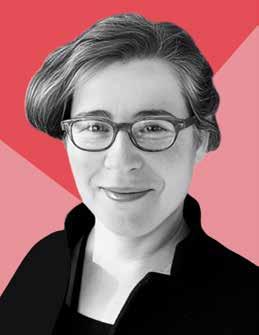
Merrily Murray-Walsh will tell you that many costume designers never retire. “We never talk about it,” she says. “We keep learning as we go, even after years in the business. It’s so nice to be collaborative and produce something meaningful.”
After five decades in the business, Murray-Walsh personifies that “keep going” mentality, even after a long, prestigious, and storied career. She remains dedicated to her craft and working on projects that combined her design passion and her American civilization major at Mills.
While a history-related major might not usually be the conduit to a career in costume design, it proved the perfect launchpad for Murray-Walsh. “Directors are always interested in lots of research,” she explains, “and I love doing that part.”
It was with the encouragement from a professor of hers at Mills, Rhoda-Gale Pollack, that Murray-Walsh went on to Chico State as an assistant to the costume design instructor and then to the Oregon Shakespeare Festival for three years. “I met John David Ridge, a guest costume designer, and asked him how I should proceed to become a designer,” she explains. “He suggested more schooling and continued to help me over the years.”
Knowing a formal design education would be necessary to pursue a career in the field, Murray-Walsh went on to obtain an MFA in costume design at Carnegie Mellon. Along the way, she apprenticed under Ridge in New York City, and she spent years assisting the legendary designers Tony Walton and John Conklin in theater, opera, and film.
“When I left graduate school, it felt important to work as an assistant,” Murray-Walsh says. “People would talk about Broadway, and that seemed so far off.”
But Murray-Walsh went on to work for numerous Broadway productions, including Brothers and The Speed of Darkness. She has since designed for a wide array of theater productions, winning awards along the way. Murray-Walsh’s skill set extends beyond the stage, however, and into both the big and small screens. Credentials there include The Glass Menagerie, The Murder of Mary Phagan, and In Search of Dr. Seuss Murray-Walsh says that her process is similar no matter the medium. “The difference is how much lead time I have for each project,” she explains. “How closely will we see the costumes? That makes a big difference.”
For an opera, for instance, Murray-Walsh may invest a full year in researching and designing the pieces that eventually end up on stage. “I might make sketches, boards with images, or other hard copies and go through a back-and-forth with the director,” she says.
Once a production is underway, Murray-Walsh stays on hand for costume fittings, often soliciting feedback from the actors. One of Murray-Walsh’s favorite types of productions involves 19th-century settings. “I’ve done a lot of work in this era, and so many of the history classes I took feed into this,” she says. “It’s amazing how much detail is underneath the looks.”
Perhaps one of her most unique gigs has been working with comedienne Paula Poundstone. When the comedienne reached out for Murray-Walsh’s help, she didn’t think twice. “My husband and I are great fans of Paula,” she says. “She has a distinct style, and I’ve been designing one-of-a-kind suits for her for the past 10 years.”
Murray-Walsh has found the pace of work a bit slower in the last few years, a combination of the pandemic and actor’s strikes. But it hasn’t cooled her love for a career she didn’t see coming. “I get to do meaningful work,” she says, “and it continues to be exciting for me.”

Ann Hould-Ward’s path to Mills and a career in theatrical design was an unlikely one. Growing up in rural Montana, she attended a tiny school where she was one of only 15 students in her graduating class. There were no art or theater classes, and far-flung colleges were well off HouldWard’s radar. But then an uncle’s friend came to visit, chockful of stories from Mills, which seemed like an exotic, far-away place to a young Hould-Ward. “I sent for my first Mills catalog at the age of 12,” she says. “It became my dream to attend.”
At 18, Hould-Ward could finally apply to Mills, along with several other schools. A scholarship was necessary for her to afford it, however, and Mills didn’t grant her one. But sometimes persistence pays off: After a semester attending Hamline University in Minnesota, Hould-Ward once again connected with Mills. “I took my grades and wrote a letter to admissions asking for a scholarship,” she explains. “They gave me a full ride.”
While Hould-Ward’s formal training in theater didn’t begin until Mills, she can reflect on early childhood to recognize where her love of theater and design first began. “The nearest movie theater was 30 miles away in Great Falls, and it was somewhere we only visited if it rained,” she says. In Montana, that’s infrequently.
Still, Hould-Ward’s first visit to the movies planted a seed. “I didn’t know what ‘it’ was, but I was filled with the amazing designs I saw,” she says. “I made my own paper dolls and their clothing. My mom also made my clothes, so very early on the idea of constructing clothing gave me the sense of time with someone special.”
That sense carried with Hould-Ward all the way through undergrad, where RhodaGale Pollack, her professor in costume design, noticed her talent. She later went on to the University of Virginia for an MFA, finishing in 1997. From there, Hold-Ward

took a chance, writing to Patricia Zipprodt, the original costume designer of Broadway’s Fiddler on the Roof, who was working on another show out of town. “She wrote back and invited me to New York, so I left my son with my mother and went,” she says. “I slept on a piece of foam on a friend’s floor.”
From those humble beginnings, HouldWard has gone on to win—or be nominated for—virtually every major theater award out there, including a Tony win for Beauty and the Beast. She’s dressed performers like Patti LuPone and Eartha Kitt and worked on hundreds of productions, and in 2024, she won the Irene Sharaff Award for Sustained Excellence in Costume Design. In the many years she has now worked in costume design, Hould-Ward’s witnessed an evolution to the processes. And since the pandemic, live theater is still playing catch up. “It’s been a slow climb to get the audience back and interested in new productions,” she says. “But theater is a small community, living on the fringe. It’s the fragility we live with because it’s not just about our work life—it’s a way of life.”
When describing her job, Sequoia Rosewood, a freelance producer and filmmaker, says that it’s “really hard,” but also, “really fun.” Over the years, she’s worked on set with the likes of football legend Jerry Rice and one of the biggest stars of our time, Beyoncé. But getting to that level meant plenty of far less glamorous work along the way.
“When I graduated, I wasn’t sure what I wanted to do,” Rosewood says. “I started with an internship with the City of San Bruno, doing a bit of everything and making $11.72 an hour.”
That gig included shooting community events and bulletins, sports festivals, and more. To keep afloat, Rosewood supplemented with multiple small jobs: “I started taking work off Craigslist, and people liked me,” she says. “I started working on student films at San Francisco State. By the time of the pandemic, I was working on non-union commercials as an assistant camera.”
Just as Rosewood found her footing, the pandemic pulled the rug out from underneath her, as it did for many creatives. “I tried COVID compliance work, but I hated it,” she says. “With the commercial industry, it’s so often profit over people.”
Rosewood needed time to reflect and remind herself why she chose a career in the arts. Part of that included her desire to put authentic diversity into films. “I grew up in Santa Cruz with lesbian moms,” she says. “I didn’t see media that reflected families like ours.”
In fulfilling that mission, Rosewood entered Mills as a transfer intermedia arts student and says that the all-women’s environment provided a much more supportive environment to learn and experiment. “I can’t say enough good things about my time there. I blossomed at Mills. I gained a lot of confidence in myself as an artist, which I had never thought of myself as before,” she says. “Every professor was an expert in some really smart, niche art thing. It was an incredible experience.”
Looking ahead, Rosewood hopes to get into the Director’s Guild of America, and she’s well on her way. Current projects include co-producing a short historical comedy and a feature-length film, and she’s working to revitalize the artists’ community in Oakland and on her project Wizard Stuff, which launched last summer.
The trick to great filmmaking, she says, is “don’t have any ego about it.” With strikes, shrinking budgets, and the looming threat of AI, Rosewood admits that “it’s a terrible time to get into the industry” but remains optimistic. “Storytelling is an essential part of the human spirit. We’ll always want to see and hear stories told by humans because it helps us understand our own selves better,” she says. “Now, making money at it? That’s another story.”
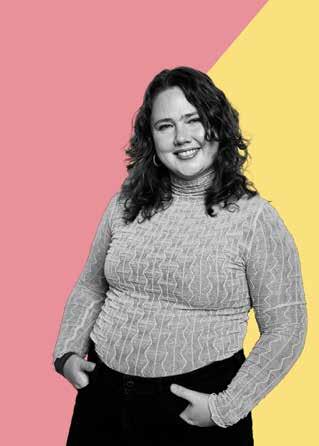
There’s really no way to pin down exactly what JoAnne Kim does for a living. Currently, she’s working for Apple Immersive Media as a post producer. But her skill set is immense, especially with the many technical aspects of film production. She’s worked as a postproduction engineer, editor, and technology executive. She’s worked in film, television, and virtual reality, and her employers have included Amazon Studios, Fox, and Legendary Entertainment. And it all began at Mills with a BA in visual communication and studio art.
“My education allowed me to get my hands on the newest, up-and-coming editorial systems, especially in the studio art classes I took,” she says. “I had access to a new class in digital media, and I worked in video and non-linear editing at the digital media lab on campus—it was a lot of fun.”
Upon graduation, Kim used her Mills network to help land a job in animatic editing with Sony. “I drove to Sony and introduced myself to that contact,” she says. “He asked me to take a test and offered me a job on the spot. I got lucky—I didn’t even know what animatics was, said yes, and negotiated a salary when I wasn’t even sure what the typical range would be.”
For the uninitiated, animatics is a preliminary version of a movie, produced by shooting successive sections of a storyboard and then adding a soundtrack. That first job with Sony allowed Kim to acquire

successive skill sets, working her way up to editor and then eventually broadcast engineer. From there, she transitioned into feature production technologist.
Kim’s learning didn’t stop with her work—she also took a series of summer classes at UCLA, Cal, and the California College of the Arts in Oakland. In her latest role at Apple in Los Angeles, Kim continues to put her skill set to work, but now it’s centered in immersive technology, working with audio and video. “Immersive is an opportunity to explore different styles of storytelling to engage an audience,” she says. “The idea of working with the greenfield of new technology is exciting. I’m starting from the ground up and building pipelines and workflows to support this type of storytelling.” 6

A MESSAGE FROM THE AAMC PRESIDENT
Hello summer, hello alums!
As I write my last Quarterly letter, I am filled with gratitude and optimism. The AAMC, led by your governors, sees a compelling future ahead. Our focus is more defined, and our direction is more certain than when I started this journey with you. Recent developments reinforce this thought. Because of your patience, your involvement and your generosity, we see that the Mills in our hearts has a future on Northeastern’s new Oakland campus. You might ask, how so? Essentially, because Mills alumnae are exceedingly generous. Your donations to the Alumnae of Color Committee’s endowed scholarship in honor of Alecia DeCoudreaux continues to grow. The Class of 1975 plans to direct a portion of its 50th Reunion donations to this fund. This endowment, as well as three AAMC scholarships now being consolidated, promote classic Mills values of diversity, opportunity, and growth for deserving awardees.
With continuing alumnae support, the AAMC successfully finished its first annual giving campaign since 2005 to cement a strong monetary base for the AAMC board, staff, and committees at Reinhardt Alumnae House. Guided by our new development director, Lee Steward, the AAMC’s launch of the Alumnae Dance Fund in May of this year is a reassuring example, similar to the fundraising support we provided the Center for Contemporary Music archive project last year.
While the AAMC is a vital 501(c)3 independent organization, we are finding traction and increased opportunities working with the Mills College Office of Alumnae Relations:
• Travel opportunities are being explored after a successful co-sponsored May weekend trip to Ashland, Oregon. Twenty alums and their guests toured three theaters and saw a ’60s-inspired production of As You Like It on a beautiful spring day at the Oregon Shakespeare Festival.
• Plans are underway to coordinate efforts to celebrate the Mills College Art Museum’s 100th anniversary celebration on October 4.


• Under the direction of Alumnae Relations, AAMC representatives and class volunteers are finalizing plans for the upcoming Reunion celebration. Join us on campus September 18 to 21, and continue to visit when you are in the area to see for yourself that the campus you remember is thriving.
At this year’s Pearl M event, which was combined with the annual academic awards given out by Mills College at Northeastern, Dean’s Office Event Specialist Zamora made remarks during their greeting to the legacy Class of 2025 that resonated with me. They introduced a piece of wisdom from the Ohlone people, who lived here long before Mills was founded, that I would like to share: As we have given and lived on this land, the land remembers us and gives back to us. I believe that is still happening, with alums and students alike. And it’s reassuring to see Northeastern following that principle as well, with the many millions of dollars it has spent to carefully maintain and upgrade this campus that is the home to so many Mills alums.
So, with extreme gratitude and appreciation, I thank you all for the privilege and honor of sharing my Mills connections with you and the personal growth I’ve experienced during these evolving times. Special thanks to the governors, to the Executive Committee, and dedicated officers continued on next page
Join us on Saturday, June 21, from 10:00 a.m. to 12:00 p.m. for the Alumnae Association of Mills College’s Annual Meeting. Hear reports from officers and committees on the year’s accomplishments, important updates, and future plans. Be part of the conversation shaping AAMC’s work moving forward.
Don’t miss out—register now at aamc-mills.org!
Living Our Leadership Legacy: AAMC’s Annual Fund ’25
The AAMC is thrilled by the successful launch of our first annual fund campaign, Living Our Leadership Legacy! Thanks to the incredible generosity of our alumnae community, we’re already making strong progress toward our goal—but we need your support to keep the momentum going.
This campaign fuels part of the AAMC’s mission to support our Mills alums worldwide —through enriching programs, travel events, and initiatives that strengthen our alumnae community. Every donation helps us expand opportunities for connection, honor Mills’ legacy, and create meaningful experiences for alums near and far.
Your support makes a difference! Join us in shaping the future of AAMC and Mills alumnae.
Visit our website at aamc-mills.org
President’s message, continued
who have volunteered countless hours. To my predecessor, Viji Nakka-Cammauf, MA ’82, who weathered terribly difficult times of uncertainty and tension with grace and faith. Month by month, the governors have met the challenges we faced. All moved forward with determination, and—I might add—a fair degree of grit, to stay the course, to make some hard and sometimes unpopular choices to chart a path for the future of the AAMC and for increased opportunities for you, our alums. Please stay active and support the new governors as they work with you to ensure that our endeavors and our history remain a part of this land and its future as Mills College at Northeastern.
Sincerely,
Debby Campbell Dittman ’68

AAMC Alumnae Dance Fund!
The Alumnae Association of Mills College is thrilled to announce its new AAMC Alumnae Dance Fund to support alumnae dancers, choreographers, historians, and videographers in their professional endeavors around the globe. The fund is used to support our alums in dance performances, new and revised choreography, historical publications about the Mills dance program and its graduates, as well as Mills alums who promote dance through visual contributions to the art form.
Funding for the arts is at an all-time low, and we need to stand with our amazing Mills alums who are actively pursuing their careers in dance. Please show your support by donating to the AAMC Alumnae Dance Fund today!
Donate directly at bit.ly/aamc-dance, or by scanning the QR code. Help Mills College dancers keep their artistry alive!
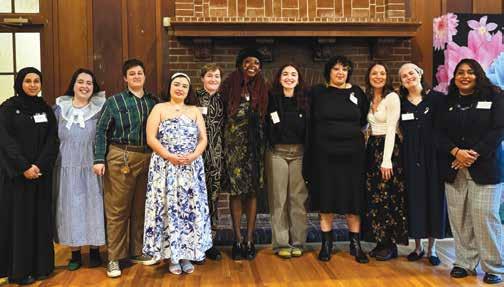
The AAMC congratulates our Mills legacy Class of 2025!

For more than 30 years, the Alumnae Association of Mills College has honored outstanding alums at Reunion. Recognize a leader who has made a difference—whether through professional achievements, dedicated volunteerism, or innovative contributions as a recent graduate.
Distinguished Achievement Award: Honoring alums with impactful careers and community contributions.
Outstanding Volunteer Award: Celebrating those who go above and beyond for the AAMC and Mills.
Recent Graduate Award: Recognizing emerging leaders making waves within their field and community.
Submit your nomination by July 18 and help us spotlight excellence! Awardees will be announced on August 8 and honored during Reunion on September 20.
Nominate now on the AAMC website!
Don’t miss your chance to connect with us at this year’s Reunion!
Friday, 9/19
• A Tea with Lee Steward, AAMC Director of Development and Operations
Saturday, 9/20:
• AAMC Update
• Class Luncheon and AAMC Awards Ceremony
• AAMC’s Delightful Desserts

From the historic streets of Malta and the breathtaking landscapes of Wales to the vibrant allure of Istanbul, let the Alumnae Association of Mills College help you embark on an unforgettable journey. Experience the perfect blend of education and adventure, forging connections and lifelong memories. Your journey of discovery, inspiration, and camaraderie helps support the AAMC. The world is waiting!
Secure your spot now at aamc-mills.org/travel .
HEART OF BRITAIN: September 1–September 13
ISTANBUL & THE TURQUOISE COAST: September 24–October 4

the experience for graduating Mills students included a senior pageant performed along the banks of Lake Aliso, as this image from 1917 illustrates. As Rosalind Cassidy ’18 described in the American Physical Education Review (which was then republished in the spring 1928 issue of the Quarterly), spring rites like the senior pageant were quite popular among women’s colleges, but Mills was luckier than others to have a sizeable enough campus for players to perform outside. Many pageants were created using stories composed by students themselves, who competed for each year’s chosen theme; created the productions with input from faculty members in art, music, and physical education; and advertised showings with streetcar posters and window cards.

By Debi Wood ’75
The spirit and legacy of Mills College were again on display at the 22nd annual Phenomenal Women of Color Celebration on March 20. The evening began with the acknowledgement of two graduating Mills legacy seniors, Frankie Keenan-Lee and Eli Meza, both art majors on their way to becoming creative forces in the art world. Eli and Frankie epitomize the creative latitude at Mills College that encouraged all genres of artistic expression to flourish.
The Phenomenal Woman of the evening, however, was Lenore A. Tate ’74, honored by Mills alums, Northeastern University leadership, faculty, staff, and many friends. Lenore, who earned
her PhD at the California School of Professional Psychology, is a noted psychologist throughout California, working with all age groups but notably focusing her practice and advocacy on older adults, promoting public policy in support of better mental and physical health services for this growing segment of the population. She has also lent her considerable business expertise to the AAMC’s Board of Governors and to several committees. Lenore’s most cherished “project,” however, is her daughter, a first-year student at UC Law San Francisco, who was in attendance.
“Phenomenal Woman,” the iconic poem by Maya Angelou, was recited by the room full of guests at Reinhart Alumnae House. The poem describes the strength, confidence, and personal power that carry women into any room or situation with self-assurance of their worth and the value of their contributions to the world.

“Working with youth and older adults, I see first-hand the importance of showing up, lifting as we climb, and creating opportunities where there are barriers,” Tate said in her remarks. “Our presence in spaces of leadership, advocacy and change is not by chance; it is by purpose and power.”
Honoring alumnae from class years ending in 5 or 0, including the 50th Reunion-ing Class of 1975

All alumnae are invited to campus!
Thursday, September 18— Sunday, September 21
HIGHLIGHTS INCLUDE:
• The Art Museum’s 100-year celebration
• Faculty-led discussions: French wine history and tasting with Bert Gordon; the Mills History Project with Ashley Adams; Maya Angelou at Mills with Ife Tayo Walker
• Open house to explore creative tools in our new Makerspace!
• An alum and local community marketplace fair
• Free, professional headshots
• Darius Milhaud concert and LGBTIQ+ karaoke night
• AAMC awards luncheon
• Class photos and dinners
REGISTRATION OPENS EARLY JUNE
Visit eventregistration.northeastern.edu/millsreunion2025 for the full schedule, and register by September 8. Brochures will be mailed to all alumnae from class years ending in 5 or 0 and available to others by request.
BOOK YOUR ACCOMMODATIONS NOW
Take advantage of special rates available through August 29 at the Executive Inn & Suites or the adjacent Best Western Plus Bayside Hotel near Jack London Square. Visit executiveinnoakland.com/groups/mills-college-reunion-2025 for details.
Email: mills.alumnaerelations@northeastern.edu Web: eventregistration.northeastern.edu/millsreunion2025
By Hannah Davis
Originally a computer science major at Mills, Samantha Lake ’17 ’s interest in theater was piqued when a friend persuaded her to attend a theater workshop on campus. It was a pivotal moment.
“I had so much fun,” she recalls. “I was a really shy kid—growing up, I always loved theater but never really tried it, so that was a gateway for me.”
Lake, a first-generation college student, quickly changed her major to theater studies. Post-graduation, she was fully committed: “I was pretty adamant about putting my degree to use.”
Finding herself on job boards seeking anything related to theater, she saw a vague posting for a puppeteer. While Lake thought she was clicking for more information, it turned out to be a “one-click” apply button, inadvertently submitting her for the position.
“I didn’t know what I was getting into, but looking back on it now, it was life-changing,” she says.
The next day, she received a call to work with Bay Area puppeteer Kevin Menegus, owner of Fratello Marionettes, which has staged shows since 1989. She went onto become his “right-hand man,” learning everything about puppetry performance and construction: “It ended up being an entire other art form I learned that I wasn’t expecting to.”
Still, she wanted to pursue film acting, so she relocated to Los Angeles after two years with the company—but with COVID, she ended up moving back and forth several times while the industry weathered the pandemic. “I reframed
my whole point to view to focus on acting because I didn’t really appreciate puppetry for what it was,” Lake says. Eventually, she realized film wasn’t for her: “It didn’t feel as gratifying to me as a performer.”
She moved back to Oakland, and Menegus invited her to tour with him in Vegas. “I realized that every time I’m struggling for a job, puppetry just falls into my lap,” Lake recalls.
Now back in L.A., Lake is training to become a lead performer at the famed Bob Baker Marionette Theater. Baker— one of the most prominent and influential marionette puppeteers—started the historic theater more than 60 years ago. It provides low and no-cost workshops for Title I schools, concerts, and variety shows, and it collaborates with local actors and artists. Maintaining Baker’s high standard of puppetry performance is important to Lake.
“He was a genius artist who trained so many of my mentors and their mentors in this art form. It’s on us to continue his legacy,” she says.
She’s currently performing in The Circus, which first premiered at the theatre in 1948 and uses more than 100 of Baker’s handcrafted marionettes. While children are the primary audience, Lake says adults flock to their sold-out shows, too.
“I think that has to a lot to do with people getting tired of being attached to screens all day,” she says. “The childlike wonder of the art is refreshing, and no matter how old you are, it’s nice to know you can still enjoy things like puppetry.”

A typical weekday for Lake involves two or three field trip shows, with a public performance on the weekends. On the days she doesn’t perform, she goes to the gym.
“The puppets we use are very heavy. Three shows a day will knock you out fast,” she says. “If I were a dancer or an actor, I’d have to take care of my body. This is the same situation.”
Lake says her theatre training at Mills gave her an upper hand as a puppeteer.
“Because I’ve learned proper acting technique, I’m aware of myself on stage as well as proper staging. I can focus on the character rather than how I’m controlling it,” she says. “I’ve had people come up to me after shows and say, ‘You must be a dancer with how much confidence you have up there.’”
Lake says she’s grateful that she’s found her niche and for the lifetime friends she’s made through the arts: “I’m smiling every day I go to work.”
New releases, publications, and performances by Mills alums and professors
A new poetry chapbook by Laurie Barton ’83, Coco Sinatra, was released on July 1 by Finishing Line Press.
Inspired to Lead: Bridging Mind, Culture, and People is the new book by Christie Chung , executive director of the Mills Institute. She told Northeastern Global News that she was inspired to author the book by the “fish out of water” feeling she got when transitioning from professor to associate provost at Mills.
Dana DeFranco, MFA ’23, has published Place in Space, the poetry thesis she completed under the supervision of creative writing professors Juliana Spahr, Truong Tran, and Stephanie Young. Spuyten Duyvil released the title earlier this year.
UC Berkeley’s Osher Lifelong Learning Institute blog has invited Professor Emeritus of History Bert Gordon to become a contributor; read his entry on his experience conducting research at the Bibliothéque National in Paris at tinyurl.com/bert-gordon.
Kathryn M. Johnson, the great-aunt of Gwen Jackson Foster ’67, is the subject of the non-fiction title she recently published, An Activist’s Journey. Johnson traveled around the U.S. in a Model T to set up new chapters of the NAACP, and she traveled to France during World War I to support Black soldiers.
Mary MacWilliams Hunter ’72 is the researcher and editor behind Women’s Health and Corporate Marketing: Our Bodies, Their Business, which was released by Routledge in 2024. She is also an assistant clinical professor at UCSF’s School of Nursing.
The spring 2025 issue of Tahoma Literary Review featured “The Rules of the Arrangement,” a short story by Associate Teaching Professor Kim Magowan
On April 6, pianist and composer Joyce McBride ’86, MA ’89, celebrated the release of her new album, The Night-time Violets Bloom, with a concert at The Back Room in Berkeley. The album is available at joycemcbride.bandcamp.com.
Blue Corn Tongue: Poems in the Mouth of the Desert is the new title from Amber McCrary, MFA ’20. The collection was published in January by The University of Arizona Press.
The University of Central Arkansas welcomed book artist Keri Miki-Lani Schroeder, MFA ’16, as its artist-in-residence during the first week of April. Her stint on campus included an artist talk and a pop-up exhibit.
Professor of Studio Art Yulia Pinkusevich and two fellow artists constructed “Fata Morgana,” an undulating structure made out of books, at the main branch of the Berkeley Public Library. It was on display from February 23 through April 19.
Galleri Urbane in Dallas hosted Color Chords, a solo show featuring work by Mel Prest, MFA ’99, from May 10 until June 14.
Deborah Taylor Barr ’95 is a professor at Modesto Junior College, which also hosted her exhibition Filtered through March 22. The paintings will go on to Artifact Gallery in New York City in December. Read more in the Modesto Bee at tinyurl.com/deborah-taylor-barr. Metal Menageries, a “touchable sculpture exhibition” by Evany Zirul ’68, was on display at Fresno’s Fig Tree Gallery during the month of May.
Share your recent release with the readers of Mills Quarterly ! Send a press kit, including high-resolution images, to mills.quarterly@northeastern.edu






On November 22, 1963, at approximately 10:30 a.m., I was in the kitchen at the Tea Shop. I vividly remember a small radio on a shelf playing music. Suddenly the program was interrupted with the shocking news.
At the time, I was a graduate student in a little-known administrative dietetic internship program. The program was directed by Helen Dempsey and Jane McClurg, who also directed the department in charge of the residence halls and all food-service operations on campus. There were seven students in the program, including Carolyn Holmes, Rachel Ostrander, Norma Barot, Maria Pacita Singson, and Ellen Foster. As dietetic interns, we managed the various foodservice operations on campus including the bakeshop and Tea Shop and did a clinical rotation at Alta Bates Hospital in Berkeley.
On November 22, 1963, I was assigned to the Tea Shop. Later that day, we all gathered in the chapel to mourn the loss of John F. Kennedy.
–June Payne Palacio ’64, Long Beach, California
Not only did I eat at the Tea Shop as a student—and was thrilled when our meal plan started to cover lunch there—I worked there as a catering waitress.
For the most part, my best friend Sabrina and I worked together. Our shifts were mostly on the weekends or evenings—perfect for a student schedule. Sabrina and I came up with a uniform of sorts, a totally ’80s get-up: a high-necked white blouse with puffy long sleeves and a mid-calf jean skirt with a flounce on the bottom.
What I liked best of all about working in the Tea Shop was getting to know the full-time staff. Rosie was the most wonderful cook. She had a
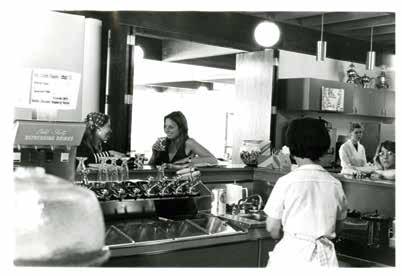
What are your memories of the Mills College Art Museum? Did your classes spend any time in the galleries? Did you have a particular artwork that transfixed you? Let us know by sending an email to mills.quarterly@northeastern.edu , leaving a voice mail at 510.430.3187 (time limit is three minutes), or mailing a letter to: Mills Quarterly / 5000 MacArthur Blvd. / Oakland, CA 94613
heart of gold and a voice and laugh that you could hear in the next block. After she left, the kitchen never was quite the same.
Liz was the food and beverage manager for the campus, and she and Mary were pals. I loved to hear Liz’s peals of laughter ring out across the room. She was so astute and one smart cookie. After an event was over, I loved to peek in the dining room and see Liz and Mary sitting at a table having a grand old time, usually over a glass of wine or three.
What felt special was that Mary and Liz talked to us about adult things: marriages, relationships, all sorts. I always felt like a part of the inner workings. When I think about them now, I realize that I’m 20 to 25 years older than they were then. These “mature” ladies were somewhere between 35 and 40!
Looking back, working at The Tea Shop was invaluable. It gave me the
opportunity to be around women from all sorts of backgrounds and strengths, and I was able to glimpse an adult world I would be entering all too soon.
–Ann
Brevig Dudley ’85, Portland, Oregon
Besides the black bean burger and sweet potato fries, the best memory I have is one time I was waiting for my order. The Tea Shop wasn’t particularly crowded, and the song “Not Go’n Cry” by Mary J. Blige came on. When I tell you everyone within earshot felt the vibe… I started singing, the cook started singing, the person next to me started singing. We were just in the moment. Strangers connecting over an epic throwback in a college cafe on a random Tuesday. It is, to this day, one of my favorite moments at Mills.
–Gina Garcia ’15, San Francisco
BY MOYA STONE, MFA ’03
In the fall of 1946, Donna Shainholts Davis ’50, accompanied by her parents, traveled down from Oregon to Mills College. She was told by a friend that Mills was “a wonderful place to study music.” Indeed it was, with faculty luminaries such as Darius Milhaud, as well as the grand Music Building designed by Walter Ratcliff and the peaceful surroundings of the campus. She was a mere 17 years old at the time and had been playing piano for seven years. “I was very serious about becoming a concert pianist,” she said.
Nearly 40 years later, Donna’s only daughter, Kathleen Davis ’87, also knew her own mind. “I was really clear that I wanted a very small school and a liberal arts school,” she said. All her life, Kathleen had heard stories from her mother about Mills: the care packages sent from Hawaii by the mother of her friend Maile, the inspiring professors, and the “extraordinary music department.” But, after attending Berkeley High, where she was among 3,000 students, the small size of Mills was also attractive to Kathleen. Her college counselor told her: “You don’t want to go there, it’s a girls’ school.” Kathleen was quick to point out that Mills was not a girls’ school, but a women’s college. Although she looked at other college brochures, she only applied to Mills. Ironically, Kathleen didn’t choose Mills because it was a women’s college. “Only
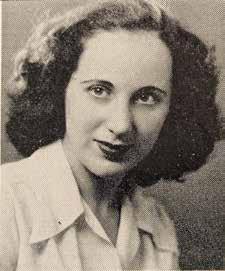
after I was there did I understand the value of having a women’s college. It’s such a different education,” she said.
Her own arrival on campus in the fall of 1983 echoed her mother’s; Kathleen, too, moved into Warren Olney Hall. It wasn’t the only thing they shared during her time at Mills.
Little did Donna know when she was at Mills that a short skit that she wrote for a Halloween event at Olney Hall was a precursor to what would become an important focus in both her and her daughter’s lives.
After two years at Mills, Donna transferred to UC Berkeley; shortly after graduating, a friend of hers convinced Donna to take an acting class from Mary Harris at UC Berkeley Extension. Although she never thought of herself as an actor, the class tapped into her inner thespian. “Just doing the work was so right,” she said. “I never looked back.” Donna went on to act on stage and in film, becoming a member of SAG-AFTRA and Actors’ Equity Association. Donna also taught acting, coached communications for clients in various professions, and directed for the stage. She even directed her daughter. When Kathleen was seven, Donna asked her if she’d like to play Shakespeare’s daughter in a play she was directing, A Cry of Players by William Gibson. Kathleen was hesitant at first, but then jumped right in and, after running lines with another actor, she was hooked. Donna recalled with a big smile: “She was so focused and capable. It was just heaven. It was wonderful.” From then on, mother and daughter worked on many a play together, including in 2014 when Kathleen directed her mother in Driving Miss Daisy at Actors Ensemble in Berkeley
At Mills, Kathleen majored in American civilization and intended to take a break from acting, keeping busy with other activities like volunteering as a Zipper— “we helped ‘zip’ freshmen into campus life,” she explained—and serving as junior class president. She did slip in a few theater classes and, as part of organizing the first Mills event for AIDS awareness, she brought scenes from a professional San Francisco production to campus. That was The AIDS Show —Artists Involved with Death and Survival—in which Donna was touring. She performed at the event with several members of the cast.

In addition to post-graduate work in community theater, Kathleen studied at Berkeley’s Acupressure Institute. She became a health educator, and currently teaches students in professional schools for acupuncture and acupressure as well as offering self-care classes in traditional Asian body therapies. Like daughter like mother; now 95 years young, Donna teaches meditation via Zoom and, in April, both women attended the Hands Off Protest in Berkeley.
But when asked for their favorite Mills traditions, each chose something different. Kathleen thinks of Paint Night. In contrast, Donna is ever the performer: “All of us standing around Lake Aliso singing ‘The Fires of Wisdom.’ ”
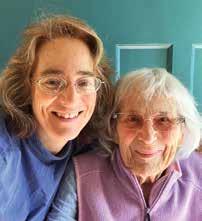
When you support the Oakland campus as a consistent donor, you play an important role in the success of Mills College at Northeastern, the Mills Institute, the Mills College Art Museum, and other legacy-aligned entities that help inform today’s students. Become a member by making just one gift two or more fiscal years in a row, which run July 1 through June 30.
such as select giveaways and invitations to special events, including an exclusive breakfast and faculty lecture on Saturday, September 20, 2025, during Mills Reunion. Explore NLS membership details and benefits at NLS members enjoy courtesies giving.northeastern.edu/loyalty.
This section includes notices of death received before April 4. Submit a listing on behalf of a member of the Mills community at mills.quarterly@northeastern.edu or 510.430.3312.
Alice Hughes Weber ’46 • January 17 • Knoxville
She took her education degree to Tucson, where she taught first grade and met her husband Charles, a reverend. Alice took up the role of a pastor’s wife, moving with him around the Midwest and Southeast for his postings and serving those churches as a volunteer and singer. She later went back to school for a master’s degree in education from the University of Tennessee and taught at a local vocational school. Her family remembers her as “never happier than when she was nurturing others.” She is survived by Charles, a sister, four children, and 11 grandchildren.
Celia Wetzel Taylor ’48 • March 9 • San Francisco
She was a homemaker who co-founded a Brownie troop and served as her parish’s secretary, only retiring to care for her aging parents—though she stayed involved with the church until her death. Celia was also enthusiastic about genealogy, belonging to the California Genealogical Society and Los Californianos, and she was an adept baker, seamstress, and gardener. She is survived by four children and six grandchildren.
Marjory “Marge” Clagett Dinwiddle ’49 • December 3, 2024 • East Jordan, Michigan She was dedicated to service, committing to activities at her church; with the Charlevoix Area Garden Club, which she served as president twice; and with all manner of local organizations. Marge also loved to play tennis and bridge, and to garden, and she founded a women’s investment club along with her friends and traveled extensively. She is survived by two daughters and two grandsons.
Mary “Pat” Phelan Kelly, MA ’49 • February 22 • Mont Belvieu, Texas
She earned her master’s degree in nutrition after attending UCLA and graduating from Whittier College, first teaching nutrition in San Francisco before marrying and moving to Texas to raise eight children. Pat later returned to work as a hospital dietician across north Texas and southern Oklahoma, logging lots of hours on the road. She was also a devout Catholic and a member of the altar society in her local parish. She is survived by seven children, 15 grandchildren, and 20 great-grandchildren.
Tanya “Toni” Ojeda Fry ’50 • February 19 • Annapolis, Maryland
It was at Mills where she met her future husband, John, a Naval officer who took her to Micronesia for the first two years of their marriage while he served. They moved around and finished his tour in Japan before settling in Bethesda with their three children. Toni’s efforts at being a Navy wife transitioned to a new role as a diplomat’s wife, when John joined the Foreign Service. After his retirement, she worked as a paralegal in a D.C. law firm, while continuing to enjoy her book clubs, the Annapolis Arts Alliance, and the community at St. Anne’s Episcopal Church. She is survived by two sons and five grandchildren.
Donna Love ’51 • December 19, 2023 • Concord, California
She initially enrolled at Mills as a member of the Class of 1951 but eventually earned her degree in psychology in 1982. Donna worked as a coach for those dealing with Attention-Deficit / Hyperactivity Disorder.
Amy Lin Shen, MA ’51 • July 1, 2024 • Greenbrae, California
She completed her undergraduate degree in chemistry in China before coming to Mills, and after graduation, she headed to MIT to work as a research assistant. There, Amy met her future husband, T.Y., and the two flirted across the courtyard joining their two labs. While she continued her work—MIT recognized the contributions she made to the Scatchard Equation—she also raised two children with T.Y., and they became chemists as well. Amy moved with T.Y. to Virginia for his position at UVa, then they retired to the North Bay in 2012. She is survived by T.Y. and her children. Her sister was the late Nancy Lin Li, MA ’48.
Elizabeth Hofmeister Williams ’52 • May 1, 2024 • Sacramento
Virginia “Ginnie” Dobbins Chappelle ’53 • February 6 • Seattle
She moved with her late husband to Mercer Island, Washington, in the early ’60s, and she stayed in the Seattle area for the rest of her life. Ginnie was a lover of the outdoors, enjoying skiing, tennis, and boating. She also devoted much time to volunteering and charity, and she faithfully attended church throughout her life. She is survived by a brother, four children, 12 grandchildren, nine great-grandchildren, and cousin Lorena Emerick Kell ’73.
Dorothy Seeger ’53 • December 4, 2024 • Oakland She parlayed a career as a social worker in Los Angeles County into study at The Ayurvedic Institute in Albuquerque, then as an assistant to the spiritual leader Rahul Patel. Dorothy continued exploring the mystical in her later years, studying with Thomas Hübl and maintaining a blog about her evolution at dorothyseeger.com. She also practiced kyudo, or Japanese archery, and donated all of her profits to the ACLU, Our Revolution, and the International Rescue Committee. She is survived by four children, including daughter Louise Sully Minton ’84.
Priscilla Beacon Carrasco ’55 • February 25 • Salem, Oregon
At Mills, she earned her degree in art history and met her future husband, and they moved back to his native Chile. After returning to the U.S., she took up photography and wrote for a Spanish newspaper, which primarily went to area farm workers and inspired Priscilla to go for a master’s in social work. She taught photography at what’s now the Pacific Northwest College of Art and later shot many images of an immigrant group known as the Russian Old Believers, which she turned into a book. She is survived by her partner, Stephan Soihl, and a son.
Sue Ann Coopman Wanzer Baldwin Peterson ’55 • January 18 • Visalia, California
She earned her Mills degree in music and married her late husband, Marshall, in the
same year. Upon his death, the running of the family farm fell to her. Sue Ann persisted and found success, later marrying her second husband, Calvin, traveling and enjoying the opera with him. After his death, she married her third husband, Arthur. She is survived by sister Jamey Coopman Francis ’60, three children, two stepchildren, eight grandchildren, two step-grandchildren, 10 great-grandchildren, cousin Katherine Coopman ’68, and niece Margaret Francis ’87.
Patricia “Patty” Sudden Doubleday ’55 • October 21, 2023 • Little Rock, Arkansas She later graduated from UCLA, where she met her late husband, Robert. They moved to Little Rock in 1959 where he was the youngest TV station manager in the U.S., and she was the consummate hostess who threw legendary Christmas parties. Patty also loved the garden around her home of 60 years, and she took pride in her fishing skills. She is survived by four children, four grandchildren, and two great-grandchildren.
Caroline Houser ’56 • April 22 • Seattle
After Mills, she went on to earn her PhD at Harvard, and her dissertation on classical Greek sculpture of antiquity was rated highly by the Fine Arts Journal and later turned into a book. Caroline was a longtime professor at Smith College, eventually retiring to Seattle with emerita status, and traveled in search of the treasures she studied. She continued to curate and publish on exhibitions that
highlighted the classics throughout her career— including From Myth to Life: Images of Women from the Classical World at Smith in 2004. She is survived by her siblings and many nieces and nephews.
Dona Iber Moseler ’56
• October 5, 2024 • Greendale, Wisconsin
She was an animal advocate. She is survived by a son.
Marjorie Nath Ettlinger ’56 • February 22, 2024
• Highland Park, Illinois
While she grappled with Parkinson’s disease in her later years, she departed with more than 50 years of service to the League of Women Voters, and she taught English as a second language at schools in Highland Park. Marjorie also greatly enjoyed the outdoors, and she was a lifelong student of the Spanish language and a patron of the arts. She also tackled pursuits such as improv and cycling to counteract her diagnosis. She is survived by three daughters, seven grandchildren, and seven great-grandchildren.
Frances Swanson Van Voorhis ’56 • May 18, 2022
• Burlingame, California
After Mills, her marriage to the late Ike took her and their family from Kansas City to Washington, D.C.; Cincinnati; New Jersey; Connecticut; and Sarasota, Florida. Frances was a devoted parent who coached soccer teams and ran carpools while keeping up with her love of tennis. She is survived by three children and six grandchildren. Her cousin was the late Caroline Keith Swank ’61.
Mary Chinn, P ’62 by her child, Bette Chinn Dare ’62 and Jerome Dare
Darla Evans Bastoni ’60 by her spouse, Richard Bastoni
Professor Emerita of Economics Marion Ross ’44 by Judy Thomas Lackritz ’69
Patsy Cox Barab ’57 • February 22 • Augusta, Georgia
She studied dietetics at Mills after earning bachelor’s and master’s degrees at Michigan State. Patsy first worked as a dietician in New Orleans, then moved back to Michigan, where she began Grand Rapids chapters for the American Heart Association and the American Diabetes Association. She then relocated to Augusta, where she taught at the Medical College of Georgia for 10 years. A new career as a realtor found her while she was there, and she loved to quilt and needlepoint, travel (especially to France), and adopting many dogs over the years. Her husband and her son predeceased her.
Barbara Hassel Swartz ’57 • June 25, 2024 • Burbank, California
Nancy “Nan” Phillips Wright Winn ’57 • February 24 • Bedford, Massachusetts Before graduating from Mills, she signed up with the Navy and served as an occupational therapist in the Medical Service Corps until she became pregnant with her first child. Nan raised her family in Oakland and Piedmont, though
after divorce, she moved to Massachusetts, where her achievements in occupational therapy continued to grow and she made quilts for veterans in wheelchairs. She is survived by two children and four grandchildren.
Annette “Tania” Wisbar ’57 • May 14, 2022 • Playa del Rey, California
She was a writer and the CEO of Argyle Road Productions. Tania’s husband, John Mahoney, pre-deceased her; they co-wrote the novel The Last Cemetery in Berlin together. She also wrote the play The Red Dress, which was based on her parents’ experiences as a mixed German-Jewish couple in Berlin at the start of World War II. She is survived by three stepchildren, sister Maria Wisbar Hansen ’56, and niece Katherine Albert Stulberg ’81.
Susan Kaufman Lapin ’58 • February 3 • Houston She completed her college degree at the University of Pennsylvania, Rice, and the University of Houston after getting married. Susan was a homemaker who volunteered with various Jewish organizations in Houston and hosted all sorts of holidays
(and a legendary Sunday pool party), complete with lots of food and games. She was a Bent Twig thanks to mother Jean Freed Kaufman ’33 and aunt Lois Freed Scofield ’39, and she is survived by three children, four grandchildren, and four great-grandchildren.
Marilyn Rasmussen Pearson ’58 • August 2024 • Sonoma Befitting her musical talents, Marilyn’s family wrote her obituary in verse to the tune of “Angel of Music” from The Phantom of the Opera. In her later years, she worked as a massage therapist and private tutor while continuing her own studies—of language and tai chi. She is survived by three children and two grandchildren.
Annette Thomas Hoxsey ’58 • June 8, 2024 • Bellingham, Washington After Mills, she graduated from the University of Washington, where she found her love of theater and starred in several productions. Annette unexpectedly became a young widow with two children, but she forged ahead and eventually blended her family with that of her second husband, James. She loved adventure, volunteering with the National Ski Patrol and traveling to every continent except Antarctica, and she pushed through a Parkinson’s diagnosis with yoga and puzzles of all sorts. She is survived by her husband, two children, and four stepchildren.
Suzanne “Susie” Mulvey Hower ’60 • April 1 • Concord, Massachusetts She studied art under Alfred Frankenstein at Mills, and
after graduation, she continued her creative explorations through music and crafts. Susie was a collector, focusing on antiques and gems from the natural world, but in particular, she loved finding and restoring dolls. She also taught herself to quilt and crochet, and she worked as a duck decoy painter. Susie is survived by her husband, Philip; two children; two granddaughters; and four siblings.
Emily Arensberg Barton ’61 • March 10 • San Jose
She taught preschool in Oakland before moving to San Jose with her college sweetheart. A childhood spent around horses morphed into a love for dogs, and Emily became a dog obedience trainer in the South Bay and, later, a veterinary technician. She also competed with her Shetland sheepdogs and fostered many dogs alongside her husband, and she enjoyed crafting Halloween costumes for her grandchildren and painting watercolors. She is survived by a sister, two daughters, and two granddaughters. Her husband, Eddy, outlived her by 13 days.
Sandra “Sandy” Keating ’61 • January 30, 2024 • Portland, Oregon
She was a devoted and talented pianist who shared her love of music at the former Portland store Classical Millennium, and she enjoyed English literature and astrology. She is survived by her siblings and nieces and nephews.
Ann O’Brien Hildebrand ’61 • January 20 • Stockton She worked as a medical
laboratory technician and ran a travel agency. Ann thrived outdoors, loving bicycling, skiing, and backpacking with the Sierra Club, but she also enjoyed the arts through involvement with the Haggin Museum, Stockton Symphony, and Stockton Civic Theatre. Ann also raised funds for the ALS Association and Junior Aid of Stockton. She is survived by two brothers, two children, four grandchildren, and a great-granddaughter.
Susan Renaker Nikas ’61 • June 10, 2022 • San Dimas, California She met her late husband while performing folk songs at his coffeehouse. Susan worked as a teacher of U.S. history and in her family’s business creating ceramic figurines, eventually rising to CEO. In recent years, she formed the bluegrass band Clay County, which performed at various music festivals, and she released her final solo album, Too Late Now, in 2021. She is survived by two siblings, a daughter, and two grandchildren.
Bonnie Bettilyon Barry ’62 • February 25 • Wailea, Hawaii
After Mills, she began a career as a flight attendant based in Salt Lake City, which jump-started Bonnie’s lifelong obsession with travel. Both before and after relocating to her dream locale of Maui, she worked as a travel agent, where she thrived—serving as executive vice president for the Association of Retail Travel Agents, planning numerous seminars, and taking cruises every chance she could. Her success followed her when she took over her father’s company
upon his death, staying CEO of Bettilyon Realty until 2023. Bonnie was known for her adventures and her philanthropy, particularly to her family’s named nursing scholarship at the University of Utah. She is survived by her partner, Dave Hedderman; a daughter; a grandson; and two siblings.
Lynne Minter Linderman ’62 • March 27 • Corvallis, Oregon She met her husband during a summer break from Mills when they nearly crashed their cars together. They married in 1961 and moved their family around the U.S. for his career as a plant pathologist with the USDA, but wherever they lived—Berkeley; Washington, D.C; Silver Spring, Maryland— Lynne volunteered relentlessly in her children’s classrooms and after-school activities, and later with the Assistance League of Corvallis, for which she founded the Winter’s Eve fundraiser. She is survived by her husband, Bob; three children; and 14 grandchildren.
Margaret “Peggy” Wright Laidlaw ’62 • March 6 • Dallas She later graduated from USC and married her husband, Walt, whom she met at a concert in San Diego during her years at Mills. His Navy training took them across the country, but they eventually settled in Dallas, where Peggy devoted herself to raising their three children and involving herself in community causes and organizations such as the Northwood Woman’s Club. She is survived by her husband, Walt; a brother; three children; and six grandchildren.
Fran Herndon, an artist associated with the San Francisco Renaissance in the mid-20th century, died on May 25, 2020, in the city where she found her creative home. The author George Albon penned a thoughtful reflection of her impact on his life; you can read it at tinyurl.com/fran-herndon.
Though an accomplished artist, her Mills degree was actually in child development at a point in her life when her artistic explorations were just starting. She and her late husband, James, met in France when she was in the Foreign Service, and they later moved to the Bay Area. He had been a student at Cal, so the couple fell in with a group of avant-garde poets later known as the San Francisco Renaissance. Fran edited and laid out an early zine by Jack Spicer, who encouraged her to take classes at the San Francisco Art Institute. Thus began an additional career after working with pre-K children in San Francisco and administrative positions. Upon her retirement, the art began flowing freely: fresco paint works inspired by a trip to Majorca, intensely intricate pen-and-ink drawings, lithographs, collages, oils, and much more. Fran first showed at Canessa Gallery in San Francisco, which was just the beginning of a series of larger, more involved exhibitions throughout the final decades of her life.
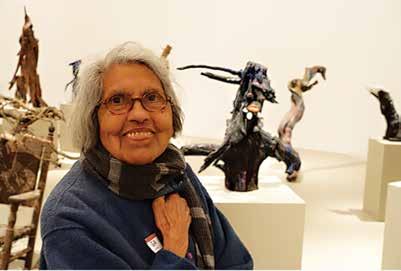
Though not an alum or staff member herself, Margot Nitoff was still well-known to generations of the Mills community. She was the “wiener dog lady” who walked her pet dachshunds on campus for more than 30 years, starting in the late 1980s. Her most recent wiener dog was named Schatzy, a German word for “sweetie,” and she forged friendships with a number of students who are now alumnae.
Margot died on February 7 in Roseville, California, where she moved after six decades of living near the Mills campus. She is survived by two sons and her grandchildren and great-grandchildren.
Donald “Don” King, MFA ’64 • January 27 • Taos, New Mexico
He was an abstract painter who taught fine art at Western Michigan University from 1966 to 2000. At that time, Don and his wife, Teri, moved to New Mexico to realize their dreams of living in the Southwest. He greatly enjoyed all kinds of art and music, with Bob Dylan and Vincent van Gogh among his favorites, and he thrived despite a diagnosis of narcolepsy. He is survived by three siblings, his wife, a daughter, and a grandson.
Leslie Scherer King ’67 • December 1, 2024 • Oconomowoc, Wisconsin
After Mills, she married and moved to northern Wisconsin, an area that was dear to her for the rest of her life. She taught at the local high school and got involved with theater productions, and after a divorce, she remarried into a big family. Leslie collected dolls and dollhouses, and she explored her ancestry through trips to Scotland and Ireland. She also enjoyed the arts and birdwatching. She is survived by two siblings,
two children, seven stepchildren, a granddaughter, and many step-grandchildren.
Laurel Hassenstein Shelton ’68 • April 23, 2023 • Santa Fe She was a Bent Twig; her aunt was Ann Peck Ward ’38.
Rosalie Calhoun ’71 • December 16, 2024 • Coronado, California Her father was Admiral William L. Calhoun, who was commander of the Pacific Fleet and survived the attack on Pearl Harbor. Rosalie earned an Associate of Arts degree in liberal studies at San Diego State in 1971 and a bachelor’s degree in business from what’s now Cal State East Bay in 1982, and she was a longtime civil servant whose longest tenure was with the IRS. She nurtured her family’s connection to the Navy; she was the sponsor of the USS John C. Calhoun, named for an ancestor who once served as vice president.
Faye Fujisaki Mar, MFA ’71 • October 3, 2024 • Honolulu Her Mills degree was in dance, and after graduation, she
married and taught at UC Santa Cruz before making the leap to New York City. Faye trained at the Alvin Ailey and Martha Graham schools, and she performed in long runs of The King and I and Sugar Babies. She was a devoted swim mom to her son, Zach, who died in 2009—an event that pushed her to begin studying Buddhism in earnest. In later years, she also expressed her artistry through glass fusion. She is survived by her husband, Dex; a sister; and three nephews.
Sandra “Sandy” Glenn Gaines ’73 • March 25, 2024 • Oakland She worked as a special education aide with Oakland Unified School District and independently.
Rosetta Hill ’74 • October 14, 2024 • Livingston, California Florence Borsuk Helzel ’78 • November 4, 2024 • Oakland Her initial foray into higher ed was disrupted by World War II, so she returned in her 50s for an art history degree at Mills and a master’s in art research and curatorial studies at John F. Kennedy University. Florence took them to the The Magnes Collection of Jewish Art and Life in Berkeley, where she served as the curator of prints and drawings until she retired at 81. As a first-generation American, she was keenly aware of the benefits of education and constantly gave back. She is survived by two children, two grandchildren, and four great-grandchildren.
Virginia “Ginny” Davis ’79 • January 19 • Monterey After Mills, she got a master’s degree at Holy Names and first worked in business before pivoting to medicine, where she eventually moved from EMT to physician’s assistant. Ginny worked all up and down the Central Coast, learning Spanish to better serve her patients. She also loved to travel, with one highlight seeing gorillas in the Democratic Republic of the Congo. She is survived by three sisters and two children.
Kathryn Amenta ’80 • February 18, 2023 • Oakland She ran an eponymous business as a financial coach.
Beth Napier ’82, TCRED ’82 • August 5, 2022 • Oakland She earned her Mills degree in chemistry.
Catherine Byrd ’89 • July 19, 2024 • Plymouth, Michigan She finished up her degree in German studies at Mills several years after departing UC Santa Cruz, then earned an MA in German at UC Davis. Catherine met her partner, Nan Washburn, early in life, and they moved around quite a bit for Nan’s music career. Catherine would find work in administrative positions but truly loved her side gig as a photographer, and music was another passion—she played the viola, violin, mandolin, and percussion, and she would sometimes sit in with the second violins at the Michigan Philharmonic. Catherine is survived by Nan, a sister, and two nieces.
Maureen “Sonny” Collins Van Westrop ’95 • October 21, 2024 • Pleasant Hill, California She was a resumer who enrolled at Mills after raising her three children and spending tons of time volunteering in schools, as well as helping to found girls’ and women’s softball leagues in Pleasant Hill. After Sonny helped put her daughters through school, she decided to follow them into higher education and earned a degree in communications. She then worked for Kaiser in Oakland until retirement in 2014, though she also played the lottery for many years and was convinced she’d eventually win. She is survived by a brother, three children, and five grandchildren, including Kendra Van Westrop ’20.
Peter Aron, child of the late Jane Baerwald Aron ’37 • July 14, 2023 • New York
Bruce Capron, spouse of Barbara Berendsen Capron ’65 • February 6, 2020 • Cupertino, California
Charles Chapin, spouse of the late Carol Giles Chapin ’60 • March 13, 2024 • Socorro, New Mexico
Mary Chinn, parent of Bette Chinn Dare ’62 • September 27, 2024 • Martinez, California
William Cook, parent of Trina Cook ’93 • June 22, 2024 • Seattle
Robert Cronholm, spouse of Susan “Suzy” Shoenberg Cronholm ’69 • June 10, 2021 • San Francisco
John Gray III, parent of Marianne Gray Johnson ’80 and Sharon Gray Taplin ’83 • February 10, 2024 • Santa Rosa
Jean Leysen, spouse of Judith Kendall ’84 • October 30, 2019 • Berkeley
Stephan Lopez, parent of Rose Lopez ’14, SES ’15 • March 19 • Los Angeles
Robert McManus, spouse of Janet “Mandy” Moore McManus ’77, TCRED ’84
• April 8, 2023 • Oakland
Margaret Olney, child of the late Warren Olney and Elizabeth Bazata Olney ’27
• May 24, 2024 • Berkeley
Jonathan Omer-Man, spouse of former trustee Nan Gefen
• May 2, 2023 • Berkeley
Gilbert Peterson, spouse of Wendy Scott Peterson ’67 • May 26, 2024 • Walnut Creek
Stuart Plummer, spouse of Agnes Bourne ’74 • December 15, 2021 • Jackson, Wyoming
Andrew Thompson, spouse of Marylin Millsap Thompson ’65 • February 21 • Woodland, California
John O’Neil, former vice president of finance • February 22 • San Francisco
Elizabeth Peterson Crews, former English instructor
• February 13 • Berkeley
PAINTING BY ELIZABETH GINNO WINKLER
Elizabeth Ginno Winkler ’30 (1907-1991) was raised in Berkeley and enrolled at Mills to study art and drama. Though she departed before graduation, Winkler took the influence of Imogen Cunningham and Roi Partridge with her into a career that included exhibitions on both coasts and participation in the 1940 Golden Gate International Exposition. She was also the president of the California Society of Etchers for 15 years and spent much of her working life as a drafter and illustrator for UC Berkeley’s engineering department.

Elizabeth Ginno Winkler, “Abstract,” mid-20th century, color lithograph on paper, 21 in. x 18 in., Gift of John Ginno Aronovici in honor of Elizabeth Ginno Winkler, 2013.13.29, Collection of the Mills College Art Museum
Salon features artwork and creative writing by Mills alums and professors. Submit your work for consideration by reaching out to mills.quarterly@northeastern.edu
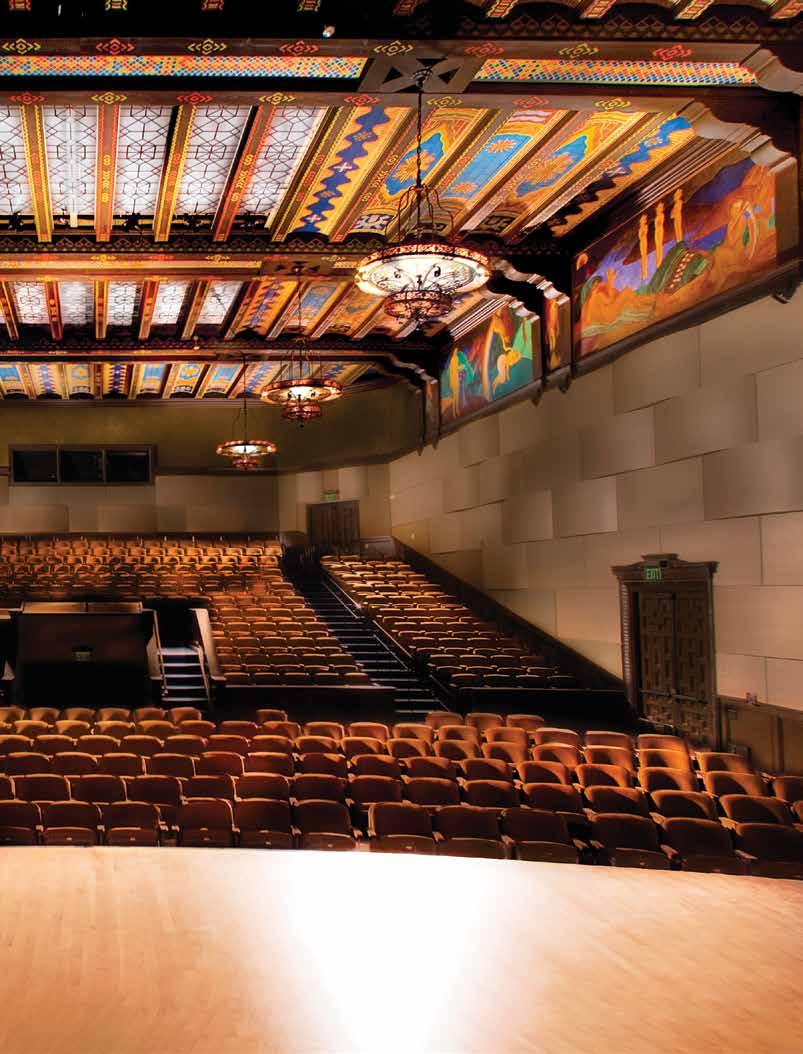
MILLS QUARTERLY
5000 MacArthur Blvd. Oakland, CA 94613-1301
510.430.3312
mills.quarterly@northeastern.edu quarterly.mills.edu

“Theater is
small community, living on the fringe. It’s the fragility we live with because it’s not just about our work
a way of life.”